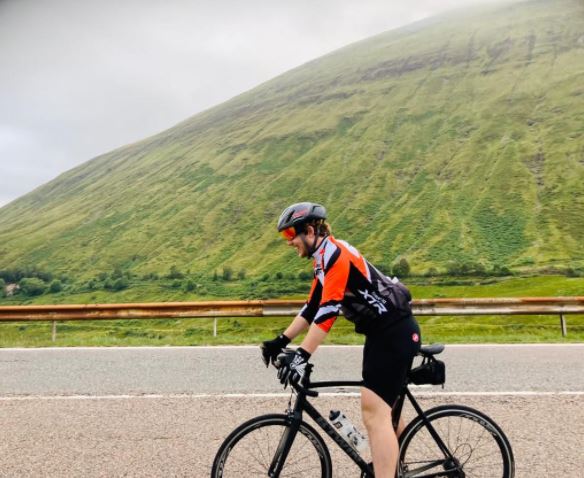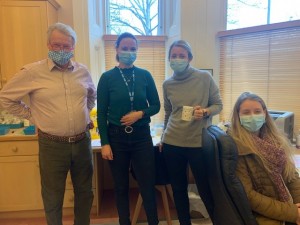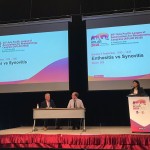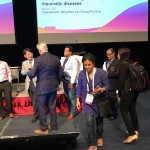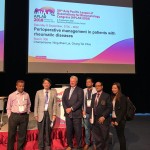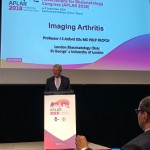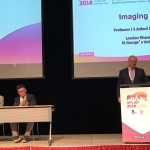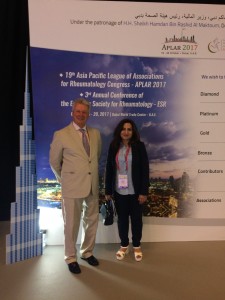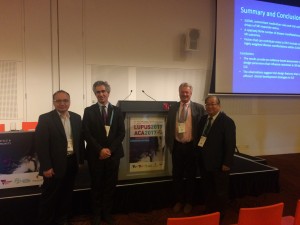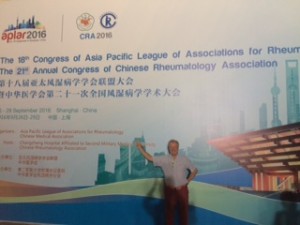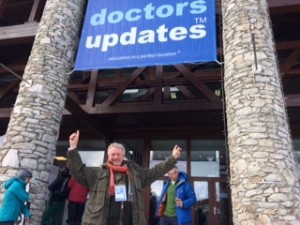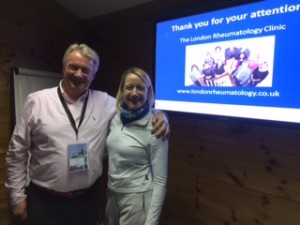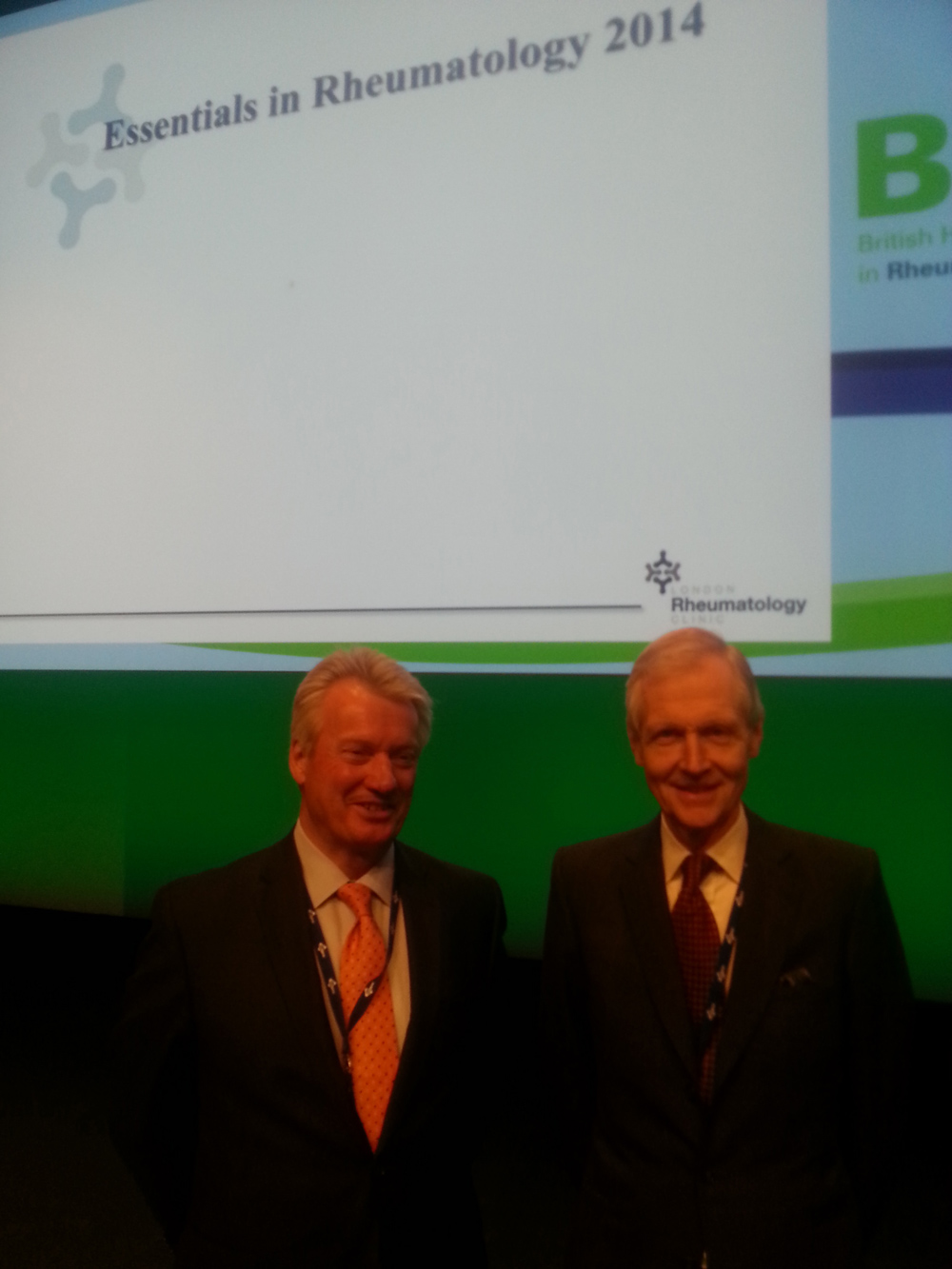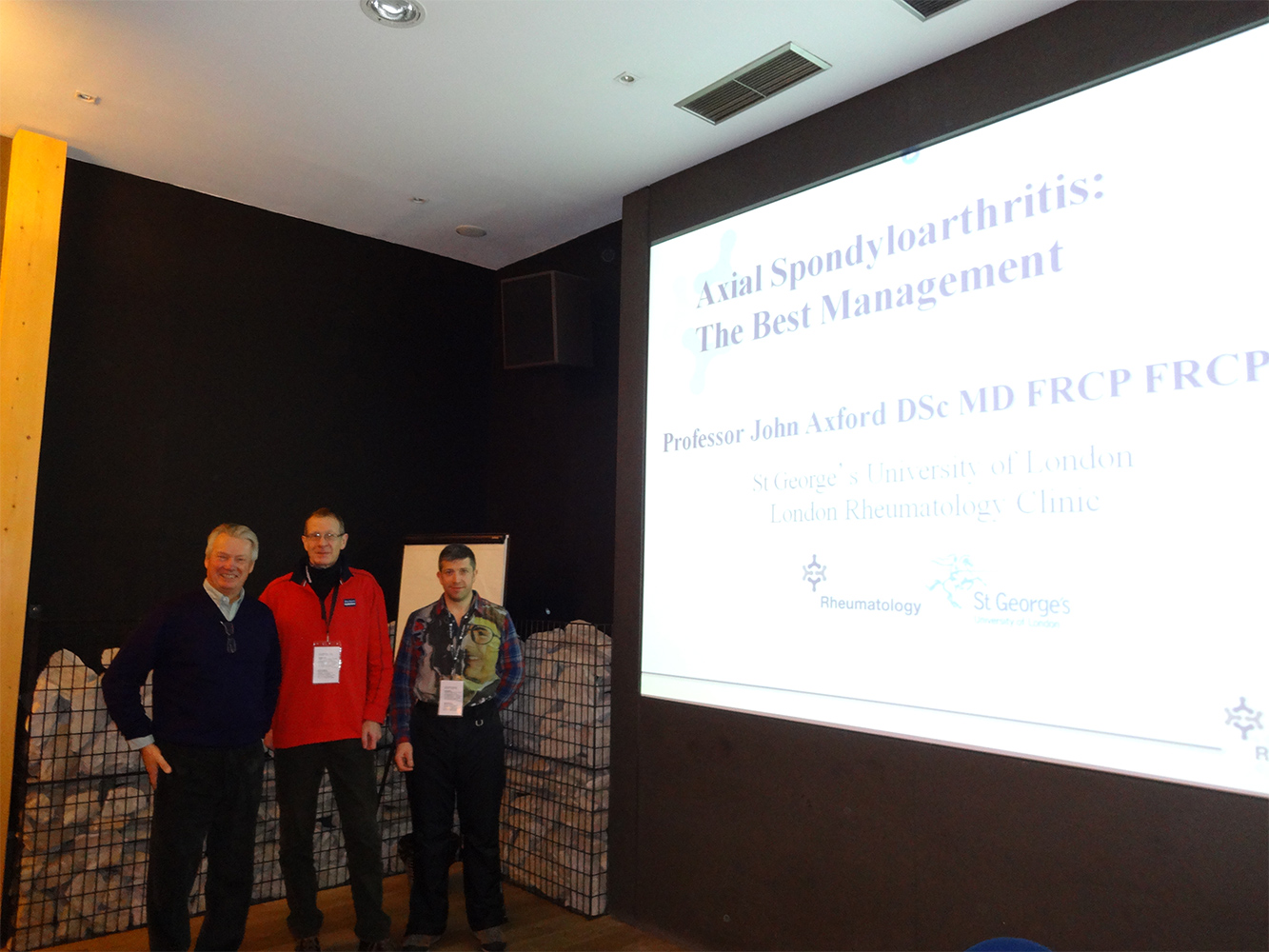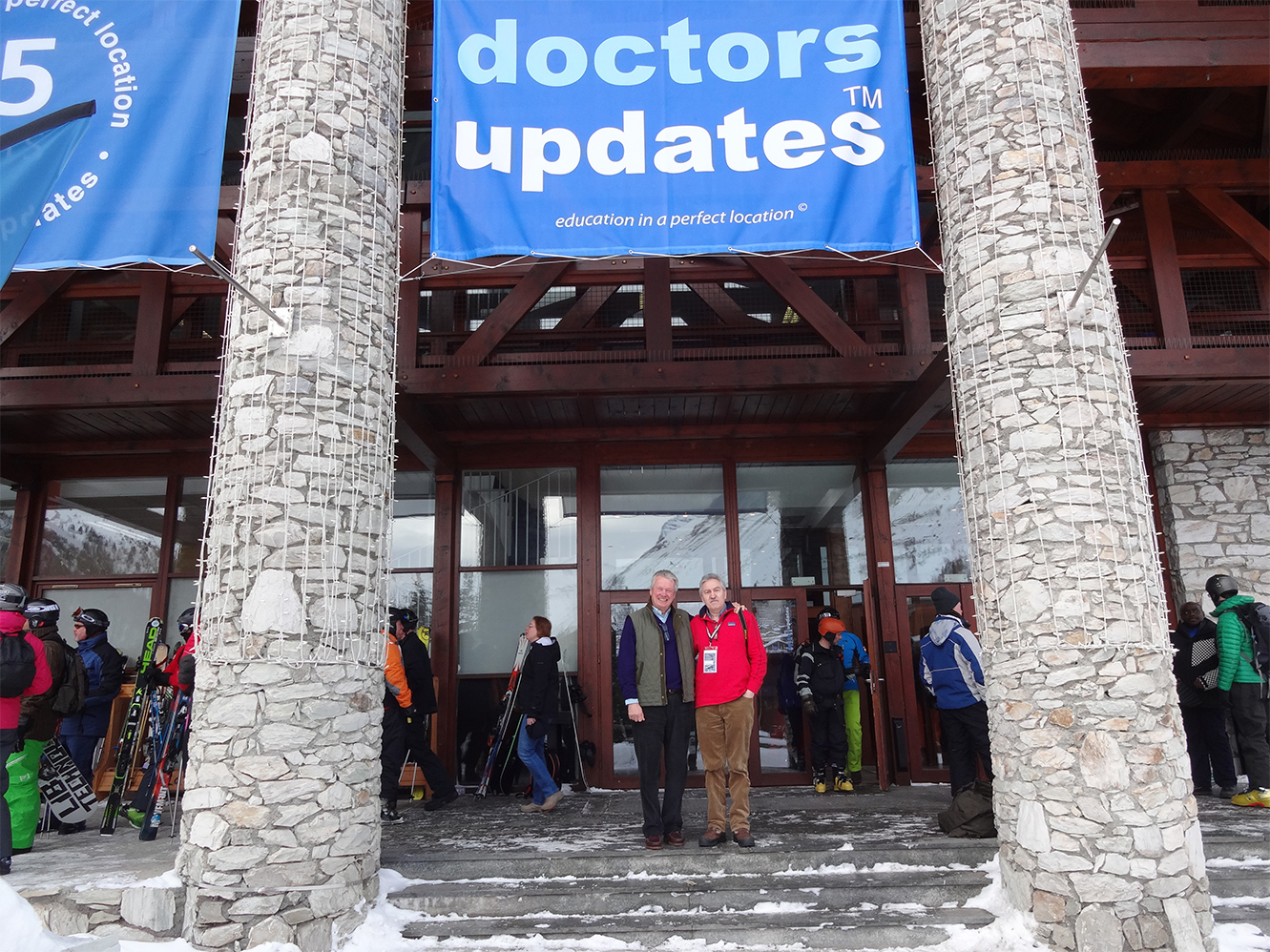LRC members keep up to date in a variety of ways, such as reading journals and attending meetings. Here we summarise some of the more important aspects of our work, and some facts we have come across that may also be of interest to you and your health.
PHYSICAL ACTIVITY & HEALTH
BACK PAIN
CARDIORESPIRATORY HEALTH AND WELLBEING
GOUT
RHEUMATOID ARTHRITIS
OSTEOARTHRITIS
DRUG THERAPIES
TALKING THERAPIES
OTHER THERAPIES
OSTEOPOROSIS AND FRACTURES
VITAMIN D
DIET & HEALTH
LONDON DIETITIANS
MISCELLANY
INTERESTING QUOTES
STATISTICS
PHYSICAL ACTIVITY & HEALTH
Does yoga reduce the risk of falls in older people?
Exercise programmes that involve balance and functional exercises are effective at preventing falls in older people living in the community. Yoga provides small to moderate improvement in balance and mobility in this population, but there is lack of evidence on effect of yoga on falls.
BMJ 2020;370:m3246
Targeting rehabilitation to improve outcomes after total knee arthroplasty in patients at risk of poor outcomes
Question: is outpatient therapist led rehabilitation superior to a single physiotherapy review and home exercise based intervention in patients at risk of a poor outcome after total knee arthroplasty?
Answer: Outpatient therapist led rehabilitation was not superior to a single physiotherapist review and home exercise based regimen.
BMJ 2020;371:m3576
Physiotherapy for sciatica
A cohort of people in primary care with sciatica for less than 90 days were randomized to receive physiotherapy for four weeks or usual care. Both groups received one education session. The study found that physical therapy improved the primary endpoint.
Ann Intern Med doi:10.7326/M20-4187
Effect of exercise training for five years on all cause mortality in older adults – the Generation 100 study
Question: What is the effect of supervised exercise training at high and moderate intensity for five years on mortality in older adults?
Answer: All cause mortality did not differ between the combined high and moderate intensity exercise group and the control group. The data do, however, suggest that HIIT lowers the risk of premature death compared with recommended guidelines and MICT.
BMJ 2020;371:m3485
Exercise and mortality
Many studies have shown that people who are physically active are less likely to have diabetes, hypertension, or depression. Evidence also suggests that exercise protects against dementia, accidental falls, coronary heart disease, and some types of cancer. So the finding from Taiwan that all-cause mortality is lower in older people with high levels of physical activity is not a surprise. The size of the reduction is substantial. Among 40,000 people followed for six years, mortality in people who took exercise several times a week was nearly 40% lower than in people who took no exercise.
Age Ageing doi:10.1093/ageing/afz172
Exercise in people over 85 – advanced age is no barrier to the benefits of tailored exercise
In an era of complex regenerative medicine, when some scientists are even considering the expansion of human life well beyond its known limits, we must not forget the simple and important message: exercise is not just for children and younger adults, people of advanced age can adapt to exercise and deserve to benefit from it. Generalists should advise all patients, regardless of age, to be as active as possible.
BMJ 2020;368:m402
Physical inactivity and effects on health and cognition
Physical activity is a simple, widely applicable, low cost strategy that could reduce the burden of diabetes, coronary heart disease and stroke.
BMJ 2019; 365: l1495
Too cold for swimming
Most swimmers cannot complete a two hour swim in water at 16°C without becoming hypothermic. What’s more, swimmers are unable to judge their own deep body temperatures. It is clear that water at these temperatures is too cold for long races unless a wetsuit is worn.
Brit J Sport Med
Dose-response associations between accelerometry measured physical activity and sedentary time and all-cause mortality
The results of this study suggest that all intensities of physical activity, including light intensity, are associated with a substantially reduced risk of death in a dose-response manner.
BMJ 2019; 366:l4470
Physical activity after the menopause
Follow-up of 80,000 postmenopausal women confirms an inverse association between physical activity and hip fracture. Low intensity activities such as walking or gardening seemed to be as protective as exercise that was more vigorous (JAMA Netw Open doi: 10.1001/jamanetworkopen.2019.14084). In contrast, moderate and high levels of physical activity were positively associated with fractures at the knee, wrist, and forearm. The recommendation that women should adopt low intensity physical activities in preference to a sedentary lifestyle is surely justified.
BMJ 2019;367:l6715
Healthy lifestyle and life expectancy, free of cancer, cardiovascular disease and type 2 diabetes
What this study adds: adherence to a healthy lifestyle in mid-life is associated with a longer life expectancy, free of major chronic diseases.
BMJ 2020;368:l6669
Exercise is as effective as drugs for high BP
A meta-analysis of randomised trials found that structured exercise achieves modest but consistent reductions in high systolic blood pressure (>140mmHg) that are similar to those seen with commonly used antihypertensives.
BMJ 2018;363:k5398
Falls: exercise in over 60s shows strong benefit
Falls in people over 60 can be prevented by exercise, concluded a Cochrane review that considered 108 randomised controlled trials with 23,407 participants with an average age of 76.It found that exercise reduced the frequency of falls by 23%.
BMJ 2019;364: l550
Arthroscopic hip surgery compared with physiotherapy and activity modification for the treatment of symptomatic femoroacetabular impingement
A recent study found that arthroscopic surgery was superior to physiotherapy and activity modification at improving patient reported outcome measures in patients with symptomatic femoroacetabular impingement.
BMJ 2019;364: l185
Even low physical activity cuts risk of death
A large observational study in the British Journal of Sports Medicine has found that walking or gardening for ten minutes to an hour each week is associated with a lower risk of death from cardiovascular disease, cancer, or any cause. Higher amounts of activities, or more vigorous ones such as running, cycling, or competitive sports, were associated with additional health benefits that were not outweighed by the risk of participating.
BMJ2019;364
Never too late to take exercise
On the subject of physical activity, a large study from the US finds that mortality from all causes in people who kept up high levels of leisure time activity throughout all their lives was a third lower than in people who were persistently inactive.That comes as no surprise. More interesting is the discovery that people who had been inactive in the early part of their lives, but who later increased their physical activity in middle age, enjoyed a reduction in mortality from all causes, cardiovascular disease and cancer, just as large as those who had been energetic throughout their lives.
BMJ 2019;365
A multicomponent exercise programme for older people in hospital
A randomised control trial, conducted in Spain, of a multicomponent exercise intervention among very ill older people in a geriatric inpatient unit has been reported. The intervention involved different kinds of exercises using various devices and surfaces. After five days there was a substantial difference in function at discharge, as well as improvement in secondary outcomes like mood and mental status (though not delirium).
JSA comment: it is important to exercise at home.
JAMA Intern Med doi:10.1001/jamainternmed.2018.4869
Golf for older people
A trial from Japan reports that teaching older people to play golf is good for their cognitive function. On average, the group randomised to two hours of golf lessons each week for six months performed better on tests of logical memory than the control group, who received health education classes instead.
BMJ 2018;363:k4161
JSA comment: more reasons for me to “go on a course.”
Physical activity associated with reduced incidence of depression
A large meta-analysis of prospective cohort studies of individuals of all ages without depression at baseline. All of the studies included at least one year of follow-up. People with high physical activity (>150 minutes/week of at least moderate-intensity activity) were less likely to have subsequent incident depression than those who had low levels of physical activity – further evidence that exercise is medicine!
Am J Psychiatry 2018;175(7);631-648
Effectiveness of the Stand More AT (SMArT) Work intervention
SMArT Work successfully reduced sitting time over the short, medium, and longer term, and positive changes were seen in work related and psychological health.
BMJ 2018;363:k4061
Surgery versus physical therapy for patients with non-obstructive meniscal tears
Several trials have shown that partial removal of the knee meniscus does not better than physical therapy in improving pain, and yet the practice persists. Researchers in the Netherlands conducted a trial comparing surgery and physical therapy for the outcome of patient reported knee function. The trial was well done, with some limitations, and their conclusion is that physical exercise is as good as meniscectomy.
JAMA doi:10.1001/jama.2018.13308
Dementia and Physical Activity (DAPA) trial of moderate to high intensity exercise training for people with dementia
Moderate to high intensity aerobic and strength exercise improves physical fitness, but this does not translate into a slowing of cognitive impairment, or noticeable improvements in functioning, behaviour or health related quality of life in people with mild to moderate dementia.
BMJ 2018;361:k1675
Are we active enough?
Inactivity increases risk of cardiovascular disease, type II diabetes, dementia and some cancers. Inactivity is defined as less than 150 minutes of moderate intensity or 75 minutes of vigorous intensity physical activity a week. In the UK 36% of adults were insufficiently active, but 67% (Kuwait) and 53% (Saudi Arabia) of adults were not sufficiently active.
BMJ 2018;362:k3857
Regular physical exercise: the ‘miracle cure’ to ageing
– Regular exercise can make you feel ten years younger.
– Fitness loss increases the risk of needing social care.
– You need to be able to get to the lavatory in time.
– Provision for exercise needs to be prioritised.
BMJ 2017;359:j4609
Too old to exercise
When the US researchers took 1635 free-living adults aged 70-89 and compared an exercise programme with health education over two years, there was no difference in progression to frailty, as defined by standardised criteria. To be sure, this was not an ideally designed trial, and the intervention did help people stand up more easily. But if you decide to stay on the sofa sipping your cocoa while channel-hopping or watching an old episode of Morse, the difference will be small and the comfort will be great.
Ann Intern Med doi:10.7326/M16-2011
Get your free Active 10 app to encourage more exercise
– More than four in ten adults in England aged 40-60 are not even managing ten minutes of continuous brisk walking a month, according to Public Health England (PHE).
– PHE’s evidence summary concludes that ten minutes of walking at a brisk intensity each day can help prevent cancer, heart disease, and poor mental health.
– The report estimates that physical activity in adults contributes to one in six deaths in the UK. What’s more, it also costs the NHS over £0.9bn a year.
– Why not try it? Free Active 10 app available as part of a new campaign to encourage people to build ten minutes of continuous brisk walking into their day.
BMJ 2017;358:j4017
Physical activity, cognitive decline, and risk of dementia
This study sought to answer the question of whether there is an association between physical activity and dementia. Data from 10,308 participants who took part in a variety of exercise modalities. Unfortunately there was no association between physical activity and risk of dementia over an average 27 year follow up. The suggestion is that a decrease in physical activity could be part of the cascade of changes occurring in the preclinical phase of dementia. Oh well, we can all give up exercise now.
BMJ 2017;356:j2709
Exercise deficiency disorder
Evidence to support a link between lack of exercise and obesity and type 2 diabetes comes thick and fast. A cross-sectional study of adults in Toronto shows an association between neighbourhood “walkability” and metabolic risk factors. Those in least walkable areas had higher blood pressure, body mass index, low density lipoprotein cholesterol, and glycated haemoglobin. Message: each extra increment of exercise was associated with lower body mass index and glycated haemoglobin. People need to heed the title of Sir Muir Gray’s latest book, Sod Sitting Get Moving!
BMJ Open doi: 10.1136/bmjopen-2016-013889
Exercise boosts brain power in over 50s
A combination of aerobic and resistance exercises (such as weights) can significantly boost brain power in people over 50 regardless of cognitive status, a review of 39 studies in the British Journal of Sports Medicine found. The evidence is strong enough to recommend prescribing both types of exercise to improve brain health in over 50s said the researchers.
BMJ 2017;357:j2018
Addiction to exercise
Exercise has numerous health benefits and is generally viewed as a positive behaviour, so patients and clinicians may overlook the dangers of exercise and addiction.
What you need to know:
– Addiction to exercise might form part of a broader eating disorder or may occur in isolation.
– Inability to stop or reduce exercising, for example in response to an injury, may indicate addiction.
– Treatment broadly follows the principles of treating other addictions, for example cognitive behavioural therapy and exercise reprogramming.
BMJ 2017;357:j1745
Exercising only at weekends is still beneficial
Although guidelines recommend spreading exercise throughout the week, “weekend warriors” who compress the recommended amount into the weekend still experience substantial benefits, research published in Jama Internal Medicine showed. The risks of death from all causes, cardiovascular disease, and cancer, were 30%, 40%, and 18% lower, respectively, in weekend warriors than among inactive adults.
BMJ 2016; doi 10.1136/bmj.j126
Gotta catch ‘em all! Pokémon GO and physical activity in young adults
– In young adults using iPhones, in the USA, Pokémon GO was associated with a moderate increase in daily number of steps.
– This increase was not, however, sustained: the number of steps reverted to pre-installation levels by the sixth week.
– The impact of Pokémon GO on physical activity was limited in the study population of young adults in the US.
BMJ 2016;355:i6270
An hour’s exercise offsets impact of sitting all day
Doing at least an hour a day of moderate physical activity, such as brisk walking or cycling, seems to eliminate the increased risk of death associated with sitting for more than eight hours a day, a study published in the Lancet has shown.
BMJ 2016;354:i4166
Physical activity and risk of breast cancer, colon cancer, diabetes, ischaemic heart disease and ischaemic stroke events
Exercise results in decrease in the risk of these diseases as level of activity increases. Most health gains occur with relatively low levels of activity, with diminishing returns at high levels of activity.
BMJ;2016;354:i3857
Hip replacements fail to make patients more active
Researchers from the Physiotherapy Department at the University of East Anglia have reported in the Journal of Clinical Rehabilitation that hip replacement surgery is failing to improve the physical activity levels of patients. Following a study of more than 1000 patients, investigating a number of physical activity modalities e.g. walking distance and speed, they found that there was no clear evidence of a change in physical activity following surgery. Patients need to be encouraged to be more physically active.
Daily Telegraph: 24/10/16
Exercise therapy versus surgery for knee arthritis
– Exercise therapy and knee arthroscopy were similarly effective for pain relief and other patient reported outcomes in a younger, more active population with a lower body mass index than previously studied.
– Exercise therapy resulted in better thigh muscle strength than surgery.
– Supervised exercise therapy should be considered as a treatment option for patients with pain and degenerative meniscal tears verified by magnetic resonance imaging (MRI), and without radiographic signs of osteoarthritis.
BMJ 2016;354:i3740
Tai chi reduces the pain of knee arthritis
Tai chi produces beneficial effects similar to a standard course of physical therapy when treating knee osteoarthritis. In addition, tai chi practitioners showed significantly greater improvements in depression and the physical component of quality of life.
BMJ 2016:doi:10.1136/bmj.i2726
Exercise
Older people are bombarded with advice to keep active. A cross-sectional survey of 3499 Irish people aged 65 years and over, revealed that nearly 70% of responders managed at least 30 minutes/day of moderate intensity activity five days a week. The variables most strongly related to activity were not physical health or physical environment, but hours spent sitting, having sex, functional ability, mental health and employment status.
Age and Aging 2015, DOI:10. 1093/ageing/AVAFV042
BACK PAIN
Low back pain
A cluster randomised trial in New Zealand found that a brief training intervention about low back pain improved attitudes, knowledge, confidence and clinical behaviour among general practitioners (PloS Med doi:10.1371/journal.pmed.1002897). Disappointingly, outcomes of pain and disability in patients treated by doctors who had been given the training were no better than in those treated by doctors who had not.
BMJ 2019; 367:l5936
Comment: Prof Axford carried out a similar study in 2000 which demonstrated similar findings.
Neuropathic pain: stimulation device for chronic back or leg pain
NICE has recommended the Senza spinal cord stimulation system as an option for treating chronic neuropathic back or leg pain that has not improved after surgery. The device delivers high frequency electrical pulses through small electrodes implanted in the spine.
BMJ 2019;364: l426
“Limited value” injections are still given for back pain
Patients with lower back pain still receive local anaesthetic or steroid injections with “limited clinical value” rather than the physical and psychological rehabilitation recommended by NICE. Annual cost of repeat injections is estimated at £10.5m.
BMJ 2019;364: l573
“Self-referral to physiotherapy for back pain cuts pressure on GPs
West Cheshire saw a 20% reduction in hospital referrals, resulting in shorter waiting times and savings of around £650,000.
BMJ 2019;364: l870
“Benefits and harms of spinal manipulative therapy for the treatment of chronic low back pain
Spinal manipulative therapy (SMT) produces similar effects as recommended therapies for chronic low back pain but seems to be better than non-recommended interventions for improvement in function in the short term.Patients should be fully informed about potential adverse events before treatment.
BMJ2019;364: l689
Back Pain
The NHS spends almost £40 million a year on cortisone injections into facet joints despite NICE guidelines in 2009 and 2016 recommending against the £540 procedure. In 2017 70,608 such injections were given, up from 62,570 five years ago.
BMJ 2018;361:k1588
“Yoga matches physical therapy for back pain
A weekly yoga class designed for patients with chronic low back pain over 12 weeks was as effective as 15 physical therapy sessions for reducing pain, improving function, and lowering the use of pain medicine, a trial found in the Annals of Internal Medicine.
BMJ 2017;357:j2968
Feeling it in your bones: association between rain and joint or back pain
– Data on millions of outpatient visits of older Americans linked to data on daily rainfall showed no clinically meaningful relation between daily rainfall and outpatient visits for joint or back pain.
– No statistically significant relation was found between the proportion of claims for joint or back pain in any given week and weekly rainfall.
BMJ 2017;359:j5326
Spinal manipulation may help acute low back pain
Spinal manipulation therapy for acute low back pain is associated with modest improvements in pain and function, a meta-analysis published JAMA found. In 15 randomised controlled trials including 1711 patients it found moderate quality evidence that spinal manipulation was associated with improvements in pain. This is about the same as the benefit from non-steroidal anti-inflammatory drugs in acute low back pain found in a Cochrane review.
BMJ 2017;357:j1901
Excerpt from NICE guidelines for treatment of low back pain and sciatica
– Paracetamol is not effective alone.
– Consider oral NSAIDs.
– Do not offer acupuncture.
BMJ 2017;356:i6748
Gabapentinoids do not help chronic low back pain
Gabapentinoids, including pregabalin and gabapentin, are increasingly being used off label to treat chronic low back pain, but a systematic review and meta-analysis in PloS Medicine has concluded that the existing evidence does not support such use. In the USA pregabalin is a controlled substance, and calls have been growing for it to be reclassified in the UK to tackle widespread misuse and addiction.
BMJ 2017;358:j3870
Opioids for low back pain
Opioid analgesics (e.g. codeine phosphate) provide modest short-term pain relief but the effect is not likely to provide significant long term benefit. Recent Lancet review suggest that diclofenac 150mg daily is more effective but this may have cardiovascular risk. To complicate matters we know that paracetamol is useless for chronic pain. So the way forward is to use cox2 selective NSAIDs (e.g. etoricoxib and celecoxib) for short periods of time when required.
JAMA Intern Med 2016, doi:10.1001/jamainternmed.2016.1251
Treatment for low back pain
It has been shown that multidisciplinary rehabilitation is more effective than using just one method of treatment. The end result is that patients receiving these programmes are likely to gain small long term benefits in pain and disability. Conclusion: see a rheumatologist and a physiotherapist.
Multidisciplinary biopsychosocial rehabilitation for chronic low back pain: Cochrane systematic review and meta-analysis (BMJ 2015;350:h444)
Paracetamol is ineffective in reducing low back pain
Paracetamol is ineffective in reducing pain or disability in patients with low back pain, and provides small and non-clinically important effects for those with hip or knee osteoarthritis. People taking paracetamol are also more likely to have abnormal results on liver function tests.
Efficacy and safety of paracetamol for spinal pain and osteoarthritis: systematic review and meta-analysis of randomised placebo controlled trials (BMJ 2015;350:h1225)
NSAIDs offer little benefit for back pain
It has been reported that NSAIDs offer little clinical benefit to patients with spinal pain and it is estimated that only one in every six patients treated with an NSAID experiences any benefit. In addition, patients taking NSAIDs were two and a half times more likely to experience adverse gastrointestinal events.
BMJ doi:1136/bmj.j605
CARDIORESPIRATORY HEALTH AND WELLBEING
Association of habitual glucosamine use with risk of cardiovascular disease
Habitual use of glucosamine supplement to relieve osteoarthritis pain might also be related to lower risks of cardiovascular disease events.
BMJ 2019; 365:l1628
Breakfast and heart disease
A recent systematic review in The BMJ failed to reach a definite conclusion about the value of eating breakfast for people wanting to lose weight. Although a large longitudinal study from the US throws no more light on this question, it did discover an association between breakfast and heart disease (J Am Coll Cardiol). People who never ate breakfast had double the cardiovascular mortality of those who ate breakfast every day. A direct causal link seems unlikely, but the observation might be useful in flagging up a high risk group.
BMJ 2019; 365:l2096
GPs should consider statins “for all over 75s”
Statins should be considered for everyone over 75, said the authors of a large meta-analysis published in the Lancet, which found that the reduced major vascular events such as myocardial infection and stroke in patient of all ages.
BMJ 2019;364: l550
Christmas, holidays, and sport as triggers of acute myocardial infarction
In this nationwide real world study covering 16 years of hospital admissions involving 283,014 cases of myocardial infarction with symptom onset documented to the nearest minute, Christmas and Midsummer holidays were associated with higher risk of myocardial infarction, particularly in older and sicker patients, suggesting a role of external triggers in vulnerable individuals.
BMJ 2018;363:k4811
Cardiorespiratory fitness
Being physically fit is a good thing; any number of studies have shown that it carries benefits for both cardiovascular and non-cardiovascular systems. Can it be taken too far? Is there a point where vigorous exercise leads not to better health but to myocardial fibrosis, aortic dilatation and coronary artery calcification? Probably not, according to a follow-up study of more than 100,000 people who had exercise testing on a treadmill (JAMA Netw Open). The highest aerobic fitness was associated with the longest survival, regardless of age, sex or comorbidities.
BMJ 2018;363:k4821
A hypothesis on inflammation and cardiovascular disease
Methotrexate is used extensively for the treatment of inflammatory arthritis. There is a hypothesis that inflammation begets atherosclerosis, which is up to seven times higher than expected in patients with inflammatory arthritis. The investigators tested methotrexate (for inhibition of inflammation) for secondary prevention of cardiovascular disease, but unfortunately there was no benefit.
N Eng J Med doi:10.1056/NEJMoa1809798
Sex differences in risk factors for myocardial infarction
Using the superb UK Biobank, it has been shown that women have a greater relative risk of myocardial infarction associated with diabetes, smoking and high blood pressure than men. Heart disease still remains relatively ‘under the radar’ of women, their carers, and the funding of research on women’s health, globally.
BMJ 2018;363:k4247
Genetic risk, incident stroke, and the benefits of adhering to a healthy lifestyle
Study findings highlight the potential of lifestyle interventions to reduce risk of stroke in entire populations, even those at high generic risk of stroke.
BMJ 2018;363:k4168
GOUT
Nurse led care for gout
A trial in the UK a few years ago showed that a nurse led package of care for patients with gout was both more effective and more cost effective than usual care from general practitioners. A questionnaire survey undertaken more than a year after the trial had ended found that the benefits persisted. What’s more, patient satisfaction with treatment was better in those receiving nurse led care.
Rheumatology doi:10.1093/rheumatology/kez333
Acute gout
Colchicine interferes with microtubule formation and down regulates multiple inflammatory pathways. Although long established as an effective treatment for acute gouty arthritis, colchicine has a narrow therapeutic window and adverse reactions, particularly abdominal pain and diarrhoea. A multicentre randomised trial in general practice compares colchicine with naproxen in the treatment of a gout flare (Ann Rheum Dis doi:10.1136/annrheumdis-2019-216154). Both drugs were effective in reducing pain but adverse effects were twice as common in people given colchicine.
Serum uric acid levels and multiple health outcomes
Despite a few hundred systematic reviews, meta-analyses, and Mendelian randomisation studies exploring 136 unique health outcomes, convincing evidence of a clear role of serum uric acid level only exists for nephrolithiasis and gout. So uric acid itself is not associated with hypertension and cardiovascular disease.
BMJ 2017;357:j2376
Gout: multicentre study proves ultrasound’s utility
The presence of synovial monosodium urate monohydrate (MSU) crystals is the gold standard for diagnosing gout.However, a new study, funded in part by the American College of Rheumatology (ACR) and led by rheumatologists, evaluated the effectiveness of ultrasound in diagnosing it. The study found that ultrasound can be useful in discriminating gout from non-gout.
Arthritis Rheumatol Feb 2017;69(2):429-438
Cardiovascular risk in people with gout
Urate lowering treatment is moderately effective in preventing relapse in people with gout. Whether this approach does anything to reduce the raised cardiovascular risk associated with this inflammatory arthritis is another matter. A systematic review of randomised controlled trials of urate lowering drugs finds no reduction in cardiovascular events compared with placebo, but the trials were too short and the cardiovascular events too infrequent to be sure.
Rheumatology doi:10.1093/rheumatology/kex065.
Corticosteroid for gout
A simple head-on comparison with indomethacin has demonstrated that a short course of prednisolone relieves gout very effectively. This may be of additional benefit to patients who cannot take NSAIDs due to heart failure and those who cannot tolerate colchicine.
Ann Intern Med 2016, doi:10.7326/M14-2070
Diet may stop gout flares
The Dietary Approaches to Stop Hypertension (DASH) diet, which is high in whole grains, fruit and vegetables, and low in red meat and saturated fats, may significantly reduce serum uric acid, a randomised study reported in Arthritis and Rheumatology showed. This may help to reduce flares in patients with gout, the authors said.
BMJ 20-27/09/16:254 (10.1136/bmj.i4464)
RHEUMATOID ARTHRITIS
Comparative effectiveness of rituximab, abatacept, and tocilizumab in adults with rheumatoid arthritis and inadequate response to TNF inhibitors
A recent study has concluded that among adults with refractory rheumatoid arthritis, followed up in routine practice, treatment with rituximab (anti-B cell) or tocilizumab (anti-IL6) was associated with larger improvements in outcomes at two years compared with abatacept (T-cell costimulation blocker).
BMJ 2019;364:167
JSA comment: We are very fortunate in Rheumatology to have many biological therapies to treat refractory rheumatoid arthritis, which means there is usually a pharmacological cure available for all patients.
Drug immunogenicity in patients with inflammatory arthritis and secondary failure to tumour necrosis factor inhibitor therapies: the REASON study
In a recent study of biological disease modifying drug treatment failure in patients with rheumatoid arthritis and axial spondylitis, anti-drug antibodies were found in between 20-29% of patients who were experiencing treatment failure. This is more common in patients taking adalimumab and infliximab.
Balsa A et al. Rheumatology 2018;57:688-693
Increased cardiovascular risk in rheumatoid arthritis: mechanisms and implications
Rheumatoid arthritis is a systematic, autoimmune disease that affects approximately 0.5-1.0% of the population. Cardiovascular disease accounts for the largest proportion of excess mortality in people with rheumatoid arthritis, and they have a 48% increased risk of cardiovascular events in comparison with the general population.
BMJ 2018;361:k2354
Treatment of rheumatoid arthritis
On 07/04/17, the Institute for Clinical and Economic Review (ICER) published its final report, Targeted Immune Modulators for Rheumatoid Arthritis: Effectiveness and Value. The good news is that there are eleven immunomodulators that are effective in the treatment of rheumatoid arthritis.
The Rheumatologist; June 2017:27
Regular fish may help rheumatoid arthritis
Eating fish at least twice a week was associated with reduced disease activity in patients with rheumatoid arthritis in a study reported in Arthritis Care and Research. Each additional serving of fish consumed each week reduced symptom scores further. The good news is that cod is no longer an endangered species.
BMJ 2017;357:j3108
Gender differences in rheumatoid arthritis
Why is rheumatoid arthritis two or three times more common in women than men? A large case-control study from Sweden explores the influence of breast feeding and exposure to oral contraceptives but fails to find much in the way of explanation. Women who had used oral contraceptives had a slightly lower risk of seropositive rheumatoid arthritis than women who had never used them, but breast feeding made no difference.
Ann Rheum Dis doi: 10.1136/annrheumdis-2017-211620
The defeat of rheumatoid arthritis
In patients with early rheumatoid arthritis, combination therapy results in faster clinical improvement and targeted treatment determines long term outcomes, drug free remission with prevention of functional deterioration and clinically relevant radiographic damage, and normalized survival and realistic outcomes.
Ann Intern Med 2016, doi:10.7326/M15-0919
In another study, combination therapy is superior to methotrexate alone, and similar to methotrexate plus biologic DMARDs for controlling disease activity in rheumatoid arthritis. This is excellent news for rheumatoid arthritis.
BMJ 2016;353:i1777
Rheumatoid arthritis and risk of non-melanoma skin cancer
Biologic naïve patients with rheumatoid arthritis are at a 20% increased risk of basal cell carcinoma (BCC) and a near doubling risk of squamous cell carcinoma (SCC) compared with the general population. TNF inhibitor treatment does not have a clinically meaningful effect on the risk of BCC but may increase the risk of SCC by a further 30%, irrespective of TNF inhibitor treatment. Vigilance regarding skin malignancies may be advisable in patients with rheumatoid arthritis.
BMJ 2016;352:i262
OSTEOARTHRITIS
Knee osteoarthritis
JSA: so it is all down to genes!
More than 1000 men and women judged to be at high risk of knee osteoarthritis, but who lacked radiological evidence of osteoarthritis, were followed for ten years. Surprisingly, it did not seem to matter how much exercise they took, at least as far their knees were concerned. About 13% developed incident radiographic osteoarthritis over the course of the study, but there was no associate with strenuous physical activity or with long period of sitting.
JAMA Netw Open doi:10/1001/jamanetworkopen.2020.4049
Arthritis in a single joint
A longitudinal study from Norway followed 347 patients who had presented acutely with arthritis affecting a single joint. In most cases the arthritis resolved, but a substantial minority, around 25%, went on to develop a chronic inflammatory arthritis (either rheumatoid arthritis or psoriatic arthritis). Patients with monoarthritis of the wrist, shoulders, or small joints of the hand were at highest risk of developing rheumatoid arthritis, while monoarthritis affecting the ankle carried the lowest risk.
Arthritis Care Res doi:10.1002/acr.23334
Preliminary results of new osteoarthritis therapy
Sprifermin joint injections were tested in a randomised dose-finding trial of people with symptomatic and radiographic knee osteoarthritis. Sprifermin is a fibroblast growth factor agonist. The primary outcome was change in the femorotibial cartilage thickness on MRI. For the higher doses of the drug, the trial did show an increase in cartilage thickness at two years compared with placebo, which is promising but far from representing a clinically useful treatment.
Lancet doi: 10.1016/S0140-6736(19)31992-0
Partial knee replacement could be first choice for some patients with osteoarthritis
The clinical and cost effectiveness of total versus partial knee replacement in patients with medical compartment osteoarthritis (TOPKAT): five-year outcomes of a randomised controlled trial.
Conclusion: the results of the study imply that partial knee replacement can be offered with confidence for people with single compartment disease who are considering knee replacement.
Beard D, Davies L, Cook J et al Lancet 2019;394:746-56
Pain caused by knee osteoarthritis: what helps?
Older people attend GP surgeries with pain caused by knee osteoarthritis and GPs has so little to offer. A systematic meta-analysis has been carried out, which included 22,037 patients with knee osteoarthritis, and unfortunately the conclusion is that nothing works convincingly. The authors say: “there was uncertainty around the estimates of effect size for change in pain for all comparisons with placebo, including the two medications that were associated with improved pain (celecoxib and glucosamine sulfate).”
JAMA doi:10.1001/jama.2018.19319
JSA comment: the reality is that if the problem is understood, and every patient is unique, there is always a solution to osteoarthritis related problems.
Osteoarthritis and pain
New osteoarthritis research from Germany has found solid and sustainable physical improvements in patients who undergo Ayurvedic medicine treatment. With a solid 3000 year old history of bringing relief to millions, Ayurveda has much to offer to the West.
Osteoarthritis Cartilage 2018 May;26(5):620-630
DRUG THERAPIES
By the banks of the silver Tay
Folk are taking ten medicines a day.
There are too many polypharmacists
And it is high time we called an armistice.
Adverse effects of meditation
Medication and mindfulness, techniques intended to get people to pay attention to the present moment and their thoughts and feelings, are widely advocated as ways to reduce stress and improve mental health wellbeing (www.nhs.uk/conditions/stress-anxiety-depression/mindfulness). However, outcomes are not invariably positive. A systematic review uncovers a variety of adverse effects, including anxiety, depression, thought disorganisation, and visual and auditory hallucinations.
Acta Psych Scand doi:10.1111/acps.13225
Steroids for the DIPs and PIPs
Kroon and colleagues conducted a double-blind randomised controlled trial of six weeks of prednisolone 10mg once daily versus placebo. Participants had to have symptomatic hand osteoarthritis with signs of inflammation in their distal and proximal interphalangeal joints. The primary endpoint (i.e. finger pain improvement on the visual analogue scale at six weeks) was positive with a large effect size and no adverse safetly signal. These data are extremely useful for those afflicted with symptomatic hand osteoarthritis.
Lancet doi:10.1016/S0140-6736(19)32489-4
Platelet rich plasma injection for acute Achilles tendon rupture
Participants: 230 adults aged 18 years and over, with Achilles tendon rupture presenting within 12 days of injury and managed non-surgically.
What this study indicates: platelet rich plasma injection has no patient benefit after acute Achilles tendon rupture.
BMJ 2019;367:l6132
Is there a place for intra-articular corticosteroid injections in the treatment of knee osteoarthritis?
Intra-articular corticosteroid injections possibly improve pain and function in the short term ( BMJ 2020;368:l6923
JSA: the answer is yes.
Another osteoarthritis flop?
The cathepsin enzyme is involved in bone and cartilage breakdown, and MIV-711 is a selective cathepsin K inhibitor. Conaghan and colleagues randomised 244 patients with knee osteoarthritis in six European countries to MIV-711 or placebo in a 26 week, double blind study. The primary outcome was change in average weekly pain severity; there was no difference between the groups for this. For the secondary outcomes of bone and cartilage progression there was a hint of promise.
Ann Intern Med doi:10.7326/M19-0675
—NSAIDs
Diclofenac use and cardiovascular risks
Diclofenac initiation is associated with a cardiovascular health risk compared with no use, paracetamol use, and use of other traditional non-steroidal anti-inflammatory drugs.
BMJ 2018;362:k3426
NSAIDs are linked to cardiac arrest risk
Use of non-steroidal anti-inflammatory drugs diclofenac and ibuprofen was associated with a significantly increased risk of cardiac arrest, a study found in the European Heart Journal – Cardiovascular Pharmacotherapy. Use of any NSAID was associated with a 31% increased risk of cardiac arrest; diclofenac was associated with a 50% increased risk and ibuprofen a 31% risk.
BMJ 2017;356:j1435
Risk of acute myocardial infarction with NSAIDs in real world use
A cohort of 446,763 individuals, including 61,460 with acute myocardial infarction was acquired.
Naproxen was associated with the same risk of myocardial infarction as that documented for other NSAIDs. The risk associated with celecoxib was comparable to that of traditional NSAIDs and was lower than for rofecoxib.
BMJ 2017;357:j1909
Celecoxib and cardiovascular death
A cardiovascular safety trial of celecoxib (Celebrex) has been published, called the PRECISION (Prospective Randomized Evaluation of Celecoxib Integrated Safety Versus Ibuprofen or Naproxen) Trial. In total more than 24,000 patients with osteoarthritis (90%), and rheumatoid arthritis (10%), with increased cardiovascular risk, were involved, and the trial duration was ten years. The data shows that celecoxib has better cardiovascular safety than ibuprofen and naproxen, and the use of celecoxib also led to fewer GI events than either NSAID, and fewer adverse renal events compared with ibuprofen.
N England J Med. 2016 doi: 10.1056/NEJMoa1611593
—OTHER MEDICATIONS
Antidepressants and hip fracture
It is widely believed that starting elderly people on antidepressants exposes them to an increased risk of falls and hip fracture. A large study from Sweden finds that this is not a straightforward story of cause and effect (JAMA Psych). More than 200,000 people aged 65 years and over, who had been prescribed antidepressants, were matched by birth year and sex to controls. Hip fractures were more than twice as common in people who had used antidepressants than they were in non-users. However, the increase in risk was as high during the year before antidepressants had been prescribed as it was in the year after.
BMJ 2019;364:l241
JSA comment: the conclusion must therefore be that elderly patients who become depressed have an increased risk of falls and hip fracture.
Efficacy, effectiveness, and safety of herpes zoster vaccines in adults aged 50 and over
The subunit vaccine was found to be 85% more effective in preventing herpes zoster cases than the live attenuated vaccine. However, the subunit vaccine led to 30% more injection site adverse events, such as redness or swelling.
BMJ 2018;363:k4029
Viagra: does it reach the parts other drugs don’t?
In theory, sildenafil (Viagra) could help treat Raynaud’s phenomenon. It is sometimes prescribed off label for severe cases of the condition, but does it work? In a French study, on-demand sildenafil was taken up to 90 minutes before conditions likely to trigger an attack, or within five minutes of the start of an attack, and compared with placebo in a series of n-of-1 trials. The aggregated results did not show that on-demand sildenafil was more effective than placebo from a clinical standpoint.
Ann Intern Med doi:10.7326/M18-0517
Hospital drug costs rise to £8.3bn a year and are set to surpass spending in primary care
Between 2010 and 2017 primary care spending was static at approximately £9bn a year while hospital spending rose at an average rate of 12.1% a year from around £4.2bn to £8.3bn. As a result, hospital spending now represents 47.6% of the NHS total spending on medicines. It is pleasing to note that the new biological therapies used to treat arthritis represent less than 2% of this medication bill.
BMJ 2018;361:k1766
Population oral steroid use is high
In a recent survey 3% of the Danish population were prescribed corticosteroids at least once a year between 1999 and 2015. In the oldest age groups, who were at the highest risk of harm, this approached 10%.
BMJ 2017;357:j2677
Hyaluronic Acid for knee osteoarthritis
An international task force convened by the European Society for Clinical and Economic Aspects of Osteoporosis and Osteoarthritis (ESCEO) recommends systematic repeated intra-articular hyaluronic acid injections as second-line treatment for patients with knee osteoarthritis. This is the first time a group of experts has made this recommendation, which is directed toward treatment of patients who have had a beneficial response with a previous cycle of treatment.
The Rheumatologist; June 2017:34
Tocilizumab receives FDA approval for giant cell arteritis (GCA)
In February 2017, a supplemental biologics licence application was accepted by the FDA for tocilizumab to treat GCA. Subcutaneous tocilizumab is a humanized interleukin 6 receptor antagonist that is already FDA approved for treating rheumatoid arthritis and polyarticular juvenile idiopathic arthritis (PJIA) or systematic juvenile idiopathic arthritis (sJIA) in patients two years of age and older. The FDA approval is the sixth for tocilizumab, which is also the first new treatment for GCA in more than 50 years.
The Rheumatologist July 2017: page 34
Study backs statins for high LDL patients
Treatment with statins reduced deaths from coronary heart disease by 28% in men with very high levels of low density lipoprotein (LDL) cholesterol but no other risk factors or signs of heart disease, a 15 year follow-up study has reported in the journal Circulation. The authors said that the findings provide the first direct randomised trial evidence to confirm current guidance that patients with LDL above 190mg/dL should be considered for statin treatment regardless of other risk factors.
BMJ 2017;358:j4171
Risk of serious infections associated with use of immunosuppressive agents in pregnant women with autoimmune inflammatory conditions
An observational cohort study has shown that in pregnant women with systemic lupus erythematosus (SLE), ankylosing spondylitis, psoriatic arthritis, and inflammatory bowel disease, use of steroids, non-biologicals, and TNF-inhibitors is associated with similar risk of serious infections. Steroid dose is an independent risk factor for serious infections in pregnancy. Pregnant women using high dose steroids should be monitored closely for development of serious infections.
BMJ 2017;356:j895
Paracetamol is ineffective in osteoarthritis
Paracetamol had virtually no effect on pain or function in patients with osteoarthritis, a large meta-analysis in the Lancet showed. Results showed that diclofenac (150mg/day) was the most effective in reducing pain and improving physical function, whereas paracetamol had nearly a null effect on pain symptoms at all doses. In an editorial, commentators concluded that many patients could be suffering needlessly because of perceived NSAID risks and paracetamol benefits which might not be real.
BMJ story doi:10.1136/bmj.i1609
Don’t take a kiloton of paracetamol
Britain gets through 6300 tons of paracetamol every year but France tops this with 10 kilotons. What pain killing power results from these nuclear weapon levels of consumption? The answer is very little: fast acting formulations of non-steroidal anti-inflammatory drugs work better for acute pain, and there is no evidence that paracetamol works for chronic pain. Its potential harms, however, are very measurable.
European Journal of Hospital Pharmacy;doi:10.1136/ejhpharm-2016-000952
Drug interactions
Between 1995 and 2010 a proportion of adults dispensed five or more, and ten or more drugs, doubled to 20.8% and tripled to 5.8% respectively. The proportion with potentially serious drug interactions more than doubled to 13%
(BMJ Medicine 2015;30:74).
TALKING THERAPIES
Mindfulness better than medication for back pain
Mindfulness meditation is better than medication at easing chronic low back pain. This study compared Mindfulness, Cognitive Behavioural Therapy (CBT), a type of talk therapy and other usual treatments for back pain, including physical therapy and meditation. The researchers examined a specific kind of mindfulness meditation called Mindfulness Based Stress Reduction (MBSR). This involves observing and accepting thoughts and feelings, including pain, and simple yoga poses. The trial involved 342 chronic back pain patients aged 20-40 years who were split into three groups, each receiving a different type of treatment. After six months 61% of patients receiving MBSR, and 58% having CBT, showed improvements in their functional limitations compared to 44% of those in the usual care group. There was also a 44% improvement in self-reported “pain bothersomeness” in the MBSR group, and 45% in the CBT group, compared to 27% receiving usual care treatments. We will all need a lot of these therapies if Donald Trump is elected!
JAMA 2016, doi:10.1001/jama.2016.2323
Mind your backs
The Mindfulness based stress reduction programme has apparently featured in over 100 randomized controlled trials, this latest one being in people aged 65 years or more with chronic back pain. In a highly selected population of mean age 74.5 years, the overall effect of Mindfulness training was small and poorly sustained, although a few participants showed noticeable benefit. Worth a try then? Possibly something to be mindful of.
JAMA Intern Med 2016, doi:10.1001/jamainternmed.2015.8033
Does Mindfulness work? Reasonably convincing evidence in depression and anxiety
Mindfulness is defined as the process of paying attention to the present moment in a non-judgemental manner. There is convincing evidence for its use in the treatment of depression and anxiety and it is effective in increasing perceptual distance from distressing stimuli.
BMJ 2015;351:h6919
OTHER THERAPIES
Meniscus surgery
A few years ago, a randomised trial raised doubts about the benefits of arthroscopic partial meniscectomy for symptoms of a degenerative medial meniscus tear. Evaluated a year after surgery, no differences were seen between those who underwent meniscectomy and those who received sham surgery, either in scores for pain or quality of life (N Eng J Med doi: 10.1056/NEJMOA1305189). The results at five years’ follow-up have not changed – except that meniscectomy was associated with a small increase in risk of radiographically detectable osteoarthritic changes.
Br L Sports Med doi:10.1136/bjsports-2020-102813
Effectiveness of a high volume injection as treatment for chronic Achilles tendinopathy
A high volume injection without corticosteroids in addition to usual care is not effective for symptom reduction in adults with chronic mid-portion Achilles tendinopathy.
BMJ 2020;370:m3027
Rehabilitation after total knee arthroplasty
A randomised trial compared different sorts of exercises for the rehabilitation of people after unilateral elective total knee arthroplasty. Patients were randomly assigned to one of four exercise regimens using a recumbent bicycle or a treadmill or neuromuscular stimulation or a combination of neuromuscular stimulation and treadmill. At discharge from outpatient treatment, roughly three months after arthroplasty, there were no differences between the groups in the distances achieved during a six minute walking test.
JAMA Netw Open doi:10/1001/jamanetworkopen.2020.16571
Management of Achilles tendon rupture
Operative treatment of acute Achilles tendon ruptures reduces the risk of re-rupture compared with non-operative treatment, although the evidence of re-ruptures is low and differences are small (2.3% v 3.9%). Operative treatment results in a higher risk of other complications than non-operative treatment (4.9% v 1.6%), mostly attributable to an increased risk of infection.
BMJ 2019;364:k5120
Dextrose injections for carpal tunnel syndrome
Compression of the median nerve at the wrist is one of the commonest peripheral neuropathies. Local treatment by perineural injection of corticosteroids is effective but the benefit is often short-lived. A small trial from Taiwan raises the possibility that injection of 5% dextrose is as good, if not better. Improvements in pain and disability were similar in the groups allocated to dextrose and corticosteroid injection at one and three months but, evaluated at six months symptoms were better in the group given dextrose.
Ann Neurol 2018 Oct;84(4):601-610. doi: 10.1002/ana.25332. Epub 2018 Oct 4
Bus passes
Bus passes have unexpected health rewards according to a recent study with benefit for mental health, reduction in loneliness, increased contact with children and friends, and diminished prevalence of depression.
BMJ 2018;361:k2205
There is little role for arthroscopic surgery in degenerative knee disease?
An expert panel makes a strong recommendation against the use of arthroscopy in nearly all patients with degenerative knee disease, based on linked systematic reviews; further research is unlikely to alter this recommendation.
BMJ 2017;357:j1982
What is the most effective treatment for frozen shoulder?
What you need to know:
– There is insufficient evidence to reliably recommend a treatment approach.
– Moderate evidence supports corticosteroid injection or hydrodilatation and physiotherapy in reduction of pain and stiffness.
– Consider specialist referral if the patient does not respond to conservative treatment or if the diagnosis is in doubt.
BMJ 2016;354:i4162
Homeopathy is not an effective treatment for any health condition
A large review by the Australian National Health and Medical Research Council has said that homeopathy is not an effective treatment for any health condition. People who choose homeopathy may put their health at risk if they reject or delay treatment, for which there is good evidence.
Homeopathy is not an effective treatment for any health condition, report concludes (BMJ 2015;350:h1478)
OSTEOPOROSIS AND FRACTURES
Osteoporosis/fragility fractures in people with asthma
Linking a general practice database to hospital admissions identified adults with asthma who also had osteoporosis or fragility fractures. There was a clear dose-response relation between exposure to inhaled and oral steroids and the risk of osteoporosis and fracture (Thorax doi:10.1136/ thoraxjnl-2020-215664). People who had received more than nine prescriptions for oral corticosteroids were twice as likely to have a fracture and had a fourfold increase in osteoporosis compared with people not prescribed steroids.
BMJ 2020;371:m4278
Osteoporosis screening – studies show patterns of underutilization
In one study of screening rates between 2008 and 2014 among 1,638,454 women, dependent upon age overall screening rates were low and ranged between 26.5% and 12.8%. One reason suggested for low utilization of osteoporosis screening was the misperception that drugs used to treat osteoporosis were not safe.
Solution: it is important to educate patients about the need for maintaining bone strength into older age. This is why the London Rheumatology Clinic offer an osteoporosis screening service.
Testosterone in men
Over a one year period, using testosterone gel increases trabecular bone density more than peripheral bone density, and more in the spine than the hip, but does it actually prevent fractures in the longer term?
JAMA Intern Med 2017,doi:10.1001/jamainternmed.2016.9546
Ten years too long: cardiac safety of strontium ranelate: key messages
– Regulatory documents from 2006-07 show that strontium ranelate increases the risk of myocardial infarction and congestive heart failure.
– The EMA did not act on these data at the time or make them publicly known until 2013, indicating regulatory failure.
– The risks of strontium ranelate outweigh the benefits, and it should not be prescribed for fracture prevention.
BMJ 2016;355:i5109
Drug changes after fragility fracture
What should you start and what should you stop after a patient has had an osteoporotic fracture?
In a recent report (JAMA Intern Med) fewer than 25% of patients with fragility fractures in the USA received drugs to enhance bone mineral density, even after the event. Drugs such as opioids, and other sedatives associated with risk of falls were rarely discontinued, and patients taking oral steroids usually remained on them at the same dose. Medication vigilance is essential after an osteoporotic fracture.
JAMA Intern Med 2016,doi:10.1001/jamainternmed.2016.4814
Prevention of falls in older people living in the community
According to the World Health Organisation, 28-35% of older people (> 65 years) fall each year globally and prevalence increases with age. A longitudinal study found that 68% of people who fell reported some injury; healthcare was required in 24% of cases, functional decline was reported by 35%, and social and physical activities were impaired for more than 15%. Close to 95% of all hip fractures are caused by falls. After a first fall, people have a 66% chance of having another fall within a year.
BMJ 2016;353:i1419
VITAMIN D
Vitamin D in diabetes
A systematic review of trials of vitamin D supplementation in the prevention of type 2 diabetes finds no benefit overall. However, slicing up the data reveals a different pattern. Trials testing moderate to high doses of vitamin D (> 1000 IU/day), conducted among people with pre-diabetes, showed a small protective effect. By contrast, trials testing lower doses, conducted in general population samples, found no benefit.
JCEM doi:10.1210/clinem/dgaa335
Vitamin D supplementation
There may be good reasons to take vitamin D supplements at the moment, but improving skeletal health is not among them. A randomised trial from the US reports that, in health adults, supplemental D3, in a daily dose of 2000 IU/day for two years, provided no benefits for bone density, trabecular structure, or cortical thickness, nor did it slow the rate of bone loss in the spine or at the hip.
J Bone Mineral Health doi:10.1002/jbmr.3958
Too much vitamin D?
Has enthusiasm for vitamin D gone too far? A reported 3% of US adults take over 4000 IU of vitamin D a day, presumably on the basis that if deficiency is bad for you, then an excess must be good. But does higher dose vitamin D supplementation improve bone mineral density (BMD) and strength? This small randomised trial of 311 health adults found that is does not; bone density (radial) was significantly lower in people who were given higher doses (4000 or 10,000 IU/day) compared with those taking the lower dose of 400 IU/day. This study raises the question: does high dose vitamin D actually have a negative effect on bone? Further study of this and other potential harms is needed.
JAMA doi:10.1001/jama.2019.11889
Can treating vitamin D deficiency reduce exacerbations of COPD?
The answer is “Yes” according to a systematic review and meta-analysis of individual participant data from randomised controlled trials.
Thorax 2019 doi10.1136/thoraxjnl-2018-212092
Vitamin D supplements do not protect bone health
Vitamin D supplementation does not prevent fractures of falls or have any clinically meaningful effects on bone mineral density, a large meta-analysis has found. The authors said there “is little justification to use vitamin D supplements to maintain or improve musculoskeletal health.” The authors reviewed 81 randomised controlled trials (53,537 participants) that assessed the effects on health of vitamin D supplementation published before 26 February 2018.
BMJ 2018;363:k4223
JSA comment: we will watch this space, but it is sensible to keep vitamin D levels out of the deficient range.
Vitamin D and risk of pregnancy related hypertensive disorders
The study found no evidence to support a causal effect of 25-hydroxyvitamin D levels on the risk of pre-eclampsia or gestational hypertension.
BMJ 2018;361:k2167
Low vitamin D levels as a risk factor for cancer
It would appear that the consequences of low vitamin D levels are ostensibly associated with bone health as there is no causal relationship with the risk of a variety of cancers.
BMJ 2017;359:j4761
Will vitamin D supplements for healthy adults help prevent disease?
Meta-analyses of randomised controlled trials (RCTs):
– show that vitamin D supplementation alone does not improve musculoskeletal outcomes.
– vitamin D on non-musculoskeletal outcomes suggest ongoing uncertainty.
Patients should therefore be counselled about sunlight exposure and diet; low dose vitamin D supplements (400-800 IU/day) can be considered on an individual basis.
BMJ 2016;355:i6201
Low levels of vitamin D3 may increase osteoarthritis (OA) pain
Vitamin D3 can influence bone health. Studies have demonstrated that vitamin D3 is an immunomodulator (i.e. reduces inflammation). IL-17A promotes inflammation in the body and decreased serum levels of vitamin D3 seem to be associated; in a recent study IL-17A was increased and vitamin D3 decreased in patients with osteoarthritis.
The Rheumatologist 2017:Volume 11/number 1: page 30
More good news about vitamin D….
Vitamin D is in the British Medical Journal and the national news again. The proven benefits are now included in the guidelines for treatment of early osteoporosis and vitamin D insufficiency. The latter can lead to soft bones (rickets in children and osteomalacia in adults). There is evidence that it can influence immunity in various models, and the latest news is that it might reduce the risk of colds and flu.
Illness from a respiratory infection is a balance between exposure to the amount of virus encounter at close quarters, and the immune defence of the individual at the time. It is wise therefore, as pointed out by the editor, to await results from a larger study on the fuller and collateral effects (good or bad) of vitamin D supplementation before citing this as evidence for its use as a preventative treatment for colds!
http://emails.bmj.com/c/17bcjUCapwted93aWlhjQWf3q
Vitamin D and calcium supplementation in falls
The US Preventive Services Task Force (USPSTF) has reviewed nine vitamin D supplementation randomized trials and found that a median oral daily dose of 800 IU of vitamin D with/without calcium was associated with a 17% reduced risk of falling and has therefore recommended vitamin D supplementation to prevent falls in community dwelling older adults.
Vitamin D and Dementia
A study by the University of Exeter (Journal of Neurology) of 1658 American adults aged 65 years and over, who were free from dementia, heart disease and stroke at the start, found that those who were moderately deficient in the vitamin had a 53% higher risk of developing any kind of dementia. So vitamin D is not only good for your bones, it may prevent neurological disease.
As a reminder, vitamin D levels can be maximized by:
– 20 minutes of midday sun on the face and forearms three times a week;
– fatty fish, e.g. salmon, tuna, mackerel, eggs and fortified foods;
– 25mcg (1000 IU) supplementation every day.
The Daily Telegraph: August 2014
HOWEVER, there are some things that vitamin D3 supplementation cannot help: a study from New Zealand set out to determine whether supplementation with vitamin D improved resilience to the adverse effects of earthquakes. Unfortunately, it did not.
Effect of monthly vitamin D3 supplementation in healthy adults on adverse effects of earthquakes: randomised controlled trial (BMJ 2014;349:g7260)
Calcium & vitamin D – you’ll feel it in your bones …
Don’t leave bone health to chance
Did you know that bone is a living tissue that continues to regenerate and change throughout our lives? Or that our bone mass increases from birth until our mid-twenties, when it reaches its peak? Put like that it is a scary thought – but thankfully we have the power to keep our bones healthy beyond our twenties, thank goodness, by adopting a diet that is rich in both calcium and vitamin D, not to mention a few rays of sunshine which help to create more vitamin D in our bodies, whilst making us naturally feel happy and healthy too.
It is really important to remember that calcium intake is directly linked to bone mineral density; and that calcium can’t be made naturally by the body, but only from our dietary intake, which makes a calcium-rich diet all the more essential!
Vitamin D, otherwise known as the sunshine vitamin, works together with calcium to keep bones healthy and good levels of sunlight and vitamin-D rich foods can assist in its production.
So it is more important than ever to engage in a healthy diet that can significantly diminish our predisposition to bone-related diseases and keep our bone health to an optimum for as long as possible.
References available on request
DIET & HEALTH
The healthiness and sustainability of dietary guidelines
National food based dietary guidelines could be both healthier and more sustainable. Providing clearer advice on limiting the consumption of animal source foods, in particular beef and dairy, had the greatest potential for increasing environmental sustainability, whereas providing clearer advice on whole grains, nuts and legumes, and red and processed meats was associated with most of the additional health benefits.
BMJ 2020;370:m2322
Food and mood: how do diet and nutrition affect mental wellbeing
Improving eating patterns may help to protect not only our physical health but also our mental health. Healthy eating patterns, such as the Mediterranean diet, are associated with better mental health than “unhealthy” eating patterns, such as the Western diet.
BMJ 2020;369:m2382
Dietary intake of total, animal, and plant proteins and risk of all cause, cardiovascular, and cancer mortality
Results suggest that high intake of total protein is associated with a lower risk of mortality from all causes. An additional 3% of energy from plant proteins a day is associated with a 5% lower risk of death from all causes. These findings support dietary recommendations to increase consumption of plant proteins in the general population.
BMJ 2020;370:m2412
Anti-inflammatory diets don’t work in rheumatoid arthritis
An anti-inflammatory diet containing foods rich in n-3 fatty acids, fibre, antioxidants, and probiotics failed to produce improvement in people with rheumatoid arthritis in a ten week Swedish trial. Disease activity scores were no lower while patients were on the anti-inflammatory diet than while they were eating a control diet similar to a Swedish diet.
Am J Clin Nutr doi:10.1093/ajcn/nqaa019
Associations of habitual fish oil supplementation with cardiovascular outcomes and all-cause mortality
Study question: Is habitual fish oil supplementation associated with cardiovascular disease (CVD) outcomes and all-cause mortality?
What this study adds: Suggests that habitual use of the fish oils is associated with a lower risk of all cause and CVD mortality and provides a marginal benefit against CVD events among the general population in the UK.
BMJ 2020;368:m456
Egg consumption and risk of cardiovascular disease modifying anti-rheumatic drugs
Study question: Is egg consumption associated with the risk of cardiovascular disease?
What this study adds: Results from three US cohort studies and updated meta-analysis show that moderate egg consumption (up to one egg a day) is not associated with cardiovascular disease risk overall, and seems to be associated with slightly lower cardiovascular disease risk in Asian populations.
BMJ 2020;368:m513
Diet, nutrition, and cancer risk: what do we know and what is the way forward?
Key message: Obesity and alcohol increase the risk of several cancers; they are the most important nutritional factors contributing to the global cancer burden.
BMJ 2020;368:m511
Effect of dose and duration of reduction in dietary sodium on blood pressure levels
Study question: Is there a dose-response relation between dietary sodium reduction and fall in blood pressure and what impact does the duration of sodium reduction have?
What this study adds: This evidence indicates that sodium reduction reduces blood pressure in both hypertensive and non-hypertensive individuals. There was a dose-response relation between sodium reduction and blood pressure fall and the effects are greater in several high risk population subsets.
BMJ 2020;368:m315
Comparison of dietary macronutrient patterns based on 14 popular named dietary programmes for weight and cardiovascular risk factor reduction in adults
Study question: What is the relative effectiveness of dietary macronutrient patterns and popular named diet programmes for weight loss and cardiovascular risk factor improvement among overweight or obese adults?
What this study adds: Evidence shows that most macronutrient diets, over a period of six months, result in modest weight loss and substantial improvements in cardiovascular risk factors, particularly blood pressure.
BMJ 2020;369:m696
Association of changes in red meat consumption with total and cause specific mortality among US women and men
Increases in red meat consumption, especially processed meat, were associated with a higher risk of death.
BMJ 2019; 365:l2110
Vegetarian diets and health: risks of ischaemic heart disease and stroke in meat eaters, fish eaters, and vegetarians over 18 years of follow-up
In a very large study consisting of 24,428 meat eaters, 7506 fish eaters and 16,254 vegetarians, it has been shown that vegetarians had a higher risk of haemorrhagic and total stroke than meat eaters, and that alongside vegetarians, fish eaters had lower risks of ischaemic heart disease than meat eaters.
BMJ 2019; 266:l4897
Omega-3, omega-6, and total dietary polyunsaturated fat for prevention and treatment of type 2 diabetes mellitus
Extensive evidence from randomised controlled trials suggests that increasing long chain omega-3 has little or no effect on prevention and treatment of type 2 diabetes mellitus.
BMJ 2019; 366:l4697
Low calorie Mediterranean diets
An intervention that included a low calorie diet Mediterranean diet of 2300kcal/day, exercise plan, and behavioural support (compared with an unrestricted Mediterranean diet) led to lasting dietary change over 12 months in overweight people with no cardiovascular disease, according to this preliminary analysis on an ongoing large Spanish randomised trial.
JAMA doi:10.1001/jama.2019.14630
Weight change across adulthood in relation to all cause and cause-specific mortality
A prospective cohort study using data from the US National Health and Nutrition Examination Survey (NHANES) 1988-94 and 1999-2014, and including 36,051 participants aged 40 years or over, with measured body weight and height at baseline and recalled weight at young adulthood (25 years old), and middle adulthood (10 years before baseline), were followed up until 31/12/15 for all cause specific mortality. The findings imply that maintaining normal weight across adulthood, especially preventing weight gain in early adulthood, is important for preventing premature deaths in later life.
BMJ 2019; 367:l5584
Eating less red meat will not improve health
Adults should continue to eat as much red and processed meat as they do currently, say the recommendations of an international research panel. The guideline, a striking departure from most others, is based on the findings of pure papers published in the same issue of Annals of Internal Medicine, which reviewed studies to assess risks of various cardiometabolic and cancer outcomes, incidence, and mortality.
BMJ 2019; 367:l5809
Effect of breakfast on weight and energy intake
Randomised controlled trials published between January 1990 and January 2018, investigating the effect of breakfast on weight or energy intake, were analysed. The study suggests that the addition of breakfast might not be a good strategy for weight loss.
BMJ 2019;364: l42
JSA comment: Why not try skipping breakfast to see what happens to your weight.
Measured energy content of frequently purchased restaurant meals
In a survey of 223 meals, from 111 randomly selected restaurants in a variety of countries, it was determined that consuming current servings of a full service and a fast food meal daily would supply between 70% and 120% of the daily energy requirements for a sedentary woman, without additional meals, drinks, snacks, appetizers, or desserts. The conclusion is that very high dietary energy content of both full service and fast food restaurant meals is a widespread phenomenon that is probably supporting global obesity and provides a valid intervention target.
BMJ 2017;363:k4864
Omega 3 fatty acids can reduce the risk of premature birth from 12 weeks
Increasing the daily intake of omega 3 long chain polyunsaturated fatty acids during pregnancy led to an 11% reduced risk of preterm birth of <37 weeks and a 42% reduced risk of early preterm birth of <34 weeks. A Cochrane review found that the optimal daily dose for preventing premature birth was 500-1000mg of long chain omega 3 fats (containing at least 500mg of DHA), starting at 12 weeks of pregnancy.
BMJ 2018;363:k4901
Measured energy content of frequently purchased restaurant meals
In a survey of 223 meals, from 111 randomly selected restaurants in a variety of countries, it was determined that consuming current servings of a full service and a fast food meal daily would supply between 70% and 120% of the daily energy requirements for a sedentary woman, without additional meals, drinks, snacks, appetizers, or desserts. The conclusion is that very high dietary energy content of both full service and fast food restaurant meals is a widespread phenomenon that is probably supporting global obesity and provides a valid intervention target.
BMJ 2017;363:k4864
Omega 3 fatty acids can reduce the risk of premature birth from 12 weeks
Increasing the daily intake of omega 3 long chain polyunsaturated fatty acids during pregnancy led to an 11% reduced risk of preterm birth of <37 weeks and a 42% reduced risk of early preterm birth of <34 weeks. A Cochrane review found that the optimal daily dose for preventing premature birth was 500-1000mg of long chain omega 3 fats (containing at least 500mg of DHA), starting at 12 weeks of pregnancy.
BMJ 2018;363:k4901
Probiotics
A recent systematic review has produced little evidence to suggest that elderly people derive any benefit from dietary supplements containing live bacteria.
BMJ 2018;361:k1835
It would appear that the Mediterranean diet is not all is made out to be!
The Mediterranean diet, rich in olive oil, vegetables, fruits, nuts and cereals, and light on dairy and red and processed meats, is thought to reduce cardiovascular disease. Well that was until recently when Spanish researchers retracted their landmark study (PREDIMED) because of “irregularities in randomisation procedures.” In addition the Cochrane Collaboration could not find the impact of the changes on the three endpoints (heart attack, stroke, cardiovascular mortality). This raises the basic question: is it actually possible to conduct a meaningful dietary trial in a free-living population?
BMJ 2018;361:k2667
What is the role of obesity in smoking behaviour?
Obesity is significantly influential in smoking initiation, intensity and cessation, which could have implications for public health interventions aimed at reducing the prevalence of these important risk factors.
BMJ 2018;361:k1767
Dietary patterns and the prevention of chronic disease
Food based prevention of chronic disease risk should prioritise fruits, vegetables, whole grains and fish, and lower consumption of red and processed meats and sugar sweetened drinks.
BMJ 2018;361:k2396
Dietary carbohydrates: role of quality and quantity in chronic disease
Carbohydrate quality has a major influence on risk for numerous chronic diseases. Replacing processed carbohydrates with unprocessed carbohydrates or healthy fats would greatly benefit public health.
BMJ 2018;361:k2340
Relation between alcohol consumption in midlife and dementia in late life
The results show a greater risk of dementia in those who abstain from alcohol or consume >14 units/week in midlife, with increasing in a linear fashion at higher consumption levels. BMJ 2018;362:k2927
Comment: Unfortunately these findings suggest a downward revision of alcohol consumption guidelines is required to promote cognitive health.
Diet and psoriasis
People with psoriasis often ask if dietary changes might improve their skin condition. A recent systematic review suggests that if they are obese then weight loss is the only dietary intervention that may be useful with no convincing evidence that dietary supplementation with fish oils, selenium, vitamin D or multivitamins makes any difference.
BMJ 2018;362:k3975
Nutritional science – is quality more important than quantity?
Prof Mozaffarian (School of Nutrition Science and Policy, Tufts University, Massachusetts) tells us that we do not need to tell patients to eat less if they are obese. What we need to tell them is to eat better, and indeed eat more of the healthy foods. So he is of the opinion that it is all about quality rather than quantity.
BMJ Podcast: http://bit.ly/diet_quality_quantity
Alcohol
Each year in England alcohol related illness costs the NHS £3.5bn and is responsible for more than a million admissions to hospital – says the Alcohol Health Alliance, which is urging the government to increase alcohol duty by 2% above inflation. BMJ 2018;362:k3780
Effect of fish oil supplementation in pregnancy on lean, bone, and fat mass at six years
Fish oil supplementation in pregnancy stimulates healthy somatic growth in young children and shows a programming effect of micronutrients during pregnancy.
BMJ 2018;362:k3312
Coffee gets a clean bill of health
Moderate coffee consumption seems generally safe and may even be beneficial with regard to cancer and liver disease prevention.
BMJ 2017;359:j5356
Weight loss
Weight reducing diets, with or without exercise advice or programmes, might reduce premature all-cause mortality in adults who are obese.
BMJ 2017;359:j4849
Improving adherence to healthy dietary patterns, genetic risk, and long term weight gain
This study suggests that improving adherence to a healthy diet could counteract part of the influence of genetic susceptibility to obesity on long term weight gain.
BMJ 2018;360:j5644
A tipple a day keeps diabetes away?
That’s what the research says. A Danish study hit the headlines this week, showing that people who drink alcohol three to four days a week had around a 30% lower risk of developing type 2 diabetes than teetotallers. The lowest risks of diabetes were in men who consumed 14 alcoholic drinks and women who knocked back nine drinks a week.
BMJ 2017;358:j3672
The importance of being PURE
PURE is a five-continent observational study of diet in relation to cardiovascular disease in mortality in nearly 150,000 people. It is probably the best of its kind ever done. The main message was negative: there was no specific connection between carbohydrate intake and cardiovascular disease: the association was with total all-cause mortality. By contrast, eating more fat, including saturated, was associated with lower cardiovascular disease, meaning we can abandon the saturated fat-cardiovascular disease hypothesis with some certainty.
Lancet doi:10.1016/50140-6736(17)32252-3
Alcohol consumption and brain health
Dr K A Welch, a consultant neuropsychiatrist from the Royal Edinburgh Hospital, cautions that even “moderate” drinking is linked to changes in brain function and structure. It has long been shown that heavy drinkers have higher incidence of dementia, more evidence of diminished executive brain function, and brain scans showing damage. Whilst it is difficult for anyone to state the optimal level of consumption, it appears that 1 unit of alcohol/day has the lowest risk, apart from no intake which has the best outcome for brain health.
BMJ 2017;357:j2645 doi: 10.1136/bmj.j2645
Alcohol and cardiovascular disease
In a population based cohort study, in adults without cardiovascular disease, it has been shown that moderate drinking is associated with a lower risk of initial presentation of several, but not all, cardiovascular diseases. This has implications for patient counselling, public health communication, and clinical research.
BMJ 2017;356:j909
Meat consumption and risk of mortality
Dietary data from 536,969 individuals aged between 50 and 71 years, and studied for 16 years, showed that a high red meat intake was associated with an increased risk of death. Cows are also bad for the health of the planet e.g. to produce 1kg of meat protein requires >110,000L of water and results in the production of 37% of methane.
BMJ 2017;357:j2190
“Five a day” may help to keep dementia away
The cognitive status of 17,700 dementia-free older patients was followed over six years. The researchers found that those consuming at least three daily servings of vegetables and two of fruit had lower odds of developing dementia.
BMJ 04/03/2017: Seven days in medicine
Ten portions are better than five, finds analysis
Eating five a day reduces the chance of heart attack, stroke, cancer, and early death, but the greatest benefit comes from eating ten portions a day, according to a meta-analysis of 95 studies including almost two million people.
BMJ 04/03/2017: Seven days in medicine
Dietary therapy for irritable bowel syndrome
Irritable bowel syndrome (IBS) is a common disorder of the digestive system, affecting approximately 10% of the global population. The most popular treatment option among patients in recent years has been a dietary approach, the “low FODMAP diet.” The term FODMAP refers to fermentable oligosaccharides, disaccharides, monosaccharides and polyols. This broad dietary class includes fructose (in fruits/sweeteners, lactose (in dairy products), fructans (wheat based products), and galacto-oligosaccharides (legumes). The full spectrum of FODMAPs may not be responsible for symptoms in a given patient. An experienced dietitian can help manage patients on a low FODMAP diet and facilitate controlled reintroduction of individual components.
BMJ 2016;354:i3902
Fruit and vegetable consumption in adolescence and early adulthood and risk of breast cancer
Studies suggest that higher intake of fruit during adolescence could reduce the risk of breast cancer.
BMJ 2016;353:i2343
Body mass index and mortality: patters and paradoxes
The bottom line of this research is that you are at least at risk of dying if your BMI is between 20 and 22.
BMJ 2016;353:i2156
How smaller portion sizes might help tackle obesity
People consistently consume more food or non-alcoholic drinks when offered larger size portions or when they use larger tableware.
BMJ 2015;351:h5863
Advice on safe alcohol drinking may be about right
The US National Institute of Alcohol Abuse and Alcoholism has advised that women should drink no more than the equivalent of 4.5 units/day or 10.5 units/week and that men should drink no more than
6 units/day or 21 units/week. For those over 65 years the American Geriatric Society has defined high risk drinking as more than 4.5 units/day or 10.5 units/week in men and women. Australian guidelines for this age group recommend no more than 2.5 units/day for men and women.
BMJ 2015;351:5082
NICE recommends small improvements to help people stay at a healthy weight
Making any improvements, however small, to physical activity or dietary habits is likely to help individuals stay at a healthy weight or prevent further weight gain.
NICE recommends small improvements to help people stay at healthy weight (BMJ 2015;350:h1427)
Have you ever wondered, when you lose weight, where does the fat go?
Most people believe that fat is converted to energy or heat, which violates the law of conservation of mass. The authors suspect this misconception is caused by the energy in/energy out mantra. They have calculated that the lungs are the primary excretory organ for fat. Losing weight requires unlocking the carbon stored in fat cells thus reinforcing that often heard refrain “eat less move more.”
BMJ 2014;349:g7257
Fruit and vegetable consumption in relation to mortality
A report in the British Medical Journal sought to ask the question about the association between the consumption of fruit and vegetables and mortality from all causes, cardiovascular disease, and cancer.
The answer, not surprisingly, showed that higher consumption of fruit and vegetables is associated with a reduced risk of mortality from all causes, particularly cardiovascular disease. Higher consumption was not however appreciably associated with cancer mortality. The bottom line therefore is to continue to consume palatable quantities of fruit and vegetables in our diet.
BMJ 2014;349:g4490
Article about Anorexia Nervosa: published in Tatler Magazine
Part 1
Part 2
LONDON DIETITIANS
Reset your breakfast routine and wake up to the health benefits of breakfast cereals
It has long been documented that breakfast is the most important meal of the day, but one in five of all adults and children are still skipping breakfast, which amounts to lower energy levels and poor concentration. Can you imagine the damage this is doing to the productivity levels of the school and working population? Research has shown that eating a good breakfast has an even bigger part to play in disease prevention and weight management over the longer term.
Still don’t have time for breakfast?
So ditch the excuses today and invest in some whole grain breakfast cereals to start your day and give your body the nutrition it needs. It only takes ten minutes to eat a bowl of cereal in the morning, and you could well be banking more energy for a more fulfilling and productive day.
Eat more cereals and lower your BMI
The evidence is stacking up in favour of breakfast cereals as they represent an important source of fibre and whole grains which are associated to lowering the risk of obesity, and the low GI of many breakfast cereals (when taken with milk) could also have a positive impact on appetite control.
Ideas for a perfect breakfast:
1. Whole rolled oats porridge with 200ml low fat milk and 80g berries
2. Wholegrain breakfast cereal (e.g. bran flakes, shredded wheat, Weetabix) + banana and 200ml low fat milk
3. Wholegrain bread/toast + 2 eggs + grilled tomato + 125ml low fat yoghurt with 80g berries
4. Smoothie made from lots of green vegetables (cucumber/kale/spinach etc) + 1 serving fruit (e.g. apple/pineapple/melon) + 2 tbsp oatbran + 1 tbsp linseeds + protein powder
So make the switch and take some time to think about breakfast! Go to www.breakfastcereal.org for more facts and information on ideas for a healthy breakfast.
MISCELLANY
Patient mortality after surgery on the surgeon’s birthday
Study: 980,876 procedures performed by 47,489 surgeons were analysed. 2064 (0.2%) of the procedures were performed on the surgeon’s birthday.
What this study adds: Patients who underwent common emergency surgical procedures on the operating surgeon’s birthday showed higher 30 day mortality compares with patients who underwent surgery on other days of the year.
BMJ 2020;371:m4381
Do you know who is the most kissed girl in the world?
Answer: she is known by many names:
• L’Inconnue due la Seine (The Unknown Woman of the Seine)
• The Mona Lisa of Seine
• Resusci Annie
• The Most Kissed Girl in the World
She may not have lived to tell the tale but she has transformed training for medical emergencies and saved many lives. She is the face we have all kissed during practice for cardiopulmonary resuscitation but have you every stopped to wonder about the story behind the mesmerising face?
In the late 19th century the body of a girl was pulled from the Seine in Paris. The pathologist was so captivated by her face that he prepared a plaster death mask. Many years later in 1960), a specialist manufacturer of dolls was asked to help develop a manikin for CPR practice. Laerdal (NB Laerdal mask) recalled a reproduction mask of L’Inconnue du Seine hanging on the wall at his grandparents’ house and though a female doll would be less intimidating for students learning CPR. Four generations later her image continues to be in use.
Resusci Annie has likely helped more than 500 million people to train in CPR, saving around 2.5 million lives. The question is, should we be concerned about the circulation of this image without anything resembling consent?
Manual acupuncture versus sham acupuncture and usual care for prophylaxis of episodic migraine without aura
Study question: Is manual acupuncture effective for migraine prophylaxis compared with sham acupuncture and usual care?
What this study adds: Manual acupuncture was more effective than sham acupuncture and usual care in reducing migraine headaches.
BMJ 2020;368:m697
Arches of the foot
Unlike the feet of other primates, the human foot has a longitudinal arch running from the calcaneus to the metatarsal heads. It provides both spring and stiffness so that forces generated by the musculature of the leg are efficiently transmitted to the ground. A new study, part computer simulation and part direct measurement on cadaveric specimens, finds that the transverse tarsal arch of the foot is almost as important (Nature doi:10.1038/s41586-020-2053-y). It too contributes substantially to the stiffness of the foot in the same way that a bank note becomes less floppy if it is curled transversely.
Ehlers-Danlos syndromes
• Consider the diagnosis of an EDS subtype in patients with any combination of easy bruising, poor scar formation, hyperextensible skin, joint hypermobility, joint pains without evidence of arthritis, and unexplained arterial or bowel rupture.
• Joint hypermobility alone is not enough to diagnose an EDS subtype, and not all types of EDS have pronounced hypermobility.
BMJ 2019;366:l4966
Blood markers for cancer
“Triage” blood tests in primary care, such as haemoglobin, platelets, serum calcium level, liver function tests, and inflammatory markers such as C-reactive protein and erythrocyte sedimentation rate, may provide “clues” to cancer in patients with non-specific symptoms.
BMJ 2019; 367:l4697
Comment: These blood investigations are routinely carried out by London Rheumatology Clinic doctors.
Misleading information about Lyme disease
The infection rate of pathogenic Borrelia species in ticks at any one site has been found to range from zero to 18%, averaging 1.4% in Scotland and 14.9% in southern England. Infected ticks are not spread by deer. Although deer increase the numbers of ticks and transport them to new areas, ruminants seem to kill Borrelia in ticks attached to them, and deer are incompetent reservoirs of B. burgdorferi.
BMJ 2019;367:l6385
Lupus outcomes in the limelight
This particular trial randomised 365 people with lupus to anifrolumab or placebo in a double blind fashion. The primary endpoint was the BICLA, which is a composite of seemingly patient centred outcomes. You either “responded” as measured by BICLA or you didn’t.
Results: 47.8% of patients in the anifrolumab group responded compared with 31.5% in the placebo group.
Conclusion: this could be good news for patients.
N.Eng J Med doi:10.1056/NEJMoa1912196
Renal transplant for patients with lupus nephritis improves survival
Patients with end stage renal disease due to lupus nephritis have high rates of premature death and things have not improved in the past 20 years. A US study shows that transplant improved survival compared with dialysis, primarily because there are fewer deaths from cardiovascular disease and infection. The authors urge “timely referral” for transplant.
Ann Intern Med doi:10.7326/M18-1570
No magic bullet for myalgic encephalopathy (ME)
Does B lymphocyte depletion with rituximab (a monoclonal antibody to CD20), which is used in conditions such as rheumatoid arthritis, relieve fatigue and improve physical activity in people with ME/CFS? Results from a well-designed trial of 151 patients, relying on self-referral and self-reported symptoms over two years, with possible recall bias, demonstrated the role of placebo (response rate 35.1%, adverse effects 18.9%) but were disappointing for rituximab (response rate 26%, adverse effects 26%). However, few patients in either group showed a major or sustained improvement, and 10% actually got worse.
Ann Intern Med doi:10.7326/M18-1451
Genome sequencing of children promises a new era in oncology diagnosis and care
Starting in 2019, all children with cancer in England will be offered whole genome sequencing in a move that will enable more comprehensive and precise diagnosis and access to more personalized treatments. According to NHS England, by 2029 more than 100,000 people a year will be able to access these tests.
BMJ 2019;364:l105
Happy people live longer
Nearly 5000 participants in a longitudinal study of people aged over 60 years, in Singapore, rated how happy they were on a seven point scale over six years. All cause mortality tended to be lower in those whose happiness scores were higher (Age Ageing). An increase of one point on the happiness scale was roughly equivalent to a 9% reduction in mortality. The investigators suggest that interventions to improve happiness would be beneficial for older people. However, it is also possible that poorer health makes people feel less happy.
BMJ 2018;363:k4600
Stalling life expectancy in the UK
The stalling of improvements in life expectancy in the UK since 2011, has prompted much comment and speculation about the causes. Longevity is the ultimate measure of health, and the flat-lining of life expectancy after decades of steady improvement has unsurprisingly led to calls for action. The UK’s life expectancy is below that of many comparator countries, especially for women, for whom there has been no improvement since the slowdown started in 2011. Inequalities are widening, and the UK’s healthcare expenditure and resources are below those of comparator countries.
BMJ 2018;362:k4050
Is life expectancy in rich countries reversing?
Most of the high income countries studies experienced recent and simultaneous declines in life expectancy. Although many of these countries rebounded and experienced gains in life expectancy during 2015-16, substantial enough to offset the declines during 2014-15, the US and United Kingdom did not, and the continue to face adverse conditions.
BMJ 2018;362:k2562
Association of paternal age with perinatal outcomes between 2007-2016 in the United States
Higher paternal age was associated with an increased risk of premature birth, low birth weight, and low Apgar score. After adjustment for maternal age, the authors found that infants born to fathers aged 45 years and over also had higher odds of being admitted to a neonatal intensive care unit and having seizures. The risk of gestational diabetes was also increased in mothers with the oldest partners.
BMJ 2018;363:k4372
Collaboration between academics and industry in clinical trials
Both industry employees and academic authors were involved in the design, conduct and reporting of most industry funded trails. However, data analysis was often conducted without academic involvement and sometime by unacknowledged industry or contract research organisation employees. The survey had a 40% (80/200) response rate, which probably reflects the sensitive nature of the questions posed.
BMJ 2018;363:k3564
Permanent vision loss in late GCA
Development of giant cell arteritis after treating polymyalgia or peripheral arthritis. A retrospective case-control study suggests that rheumatologists should be on the lookout for cranial signs and symptoms in patients with PMR of peripheral arthritis because these can portend more serious outcomes related to the development of GCA.
J Rheumatol 2018 Mar;45(5):678-685
Stress-related disorder increases risk of subsequent autoimmune disease
This study found that adults with a new onset stress-related disorder are at significantly increased risk of a subsequent autoimmune disease. Patients given a diagnosis of post-traumatic stress disorder (PTSD) who receive treatment with selective serotonin reuptake inhibitors (SSRIs) for at least one year have a reduced risk of subsequent autoimmune disease.
JAMA 2018;319(23):2388-2400
Potentially serious incidental findings on brain and body magnetic resonance imaging of apparently asymptomatic adults
A substantial proportion of apparently asymptomatic adults will have potentially serious incidental findings on MRI, however, little is known of their final diagnoses or health consequences. Systematic, long term follow-up studies are needed to better inform on these and the implications for policies on feedback of potentially serious incidental findings.
BMJ 2018;363:k4577
Use of tests in UK primary care
Study question: has there been an increase in test use in UK general practice, and, if so, to what degree and which tests showed the largest increase. Results identified that test use has increased markedly over time in both sexes and across all age groups (test types: laboratory, imaging and miscellaneous). Of the patients who underwent at least one test annually, the proportion who had more than one test increased significantly over time. Test use in UK general practice has increased exponentially. Future research should focus on why, in terms of both clinical indication and reasoning, and patient beliefs and expectations about the purpose and accuracy of tests.
BMJ 2018;363:k4895
Characteristics of surgeons and patient’s outcomes
It is pleasing to note that if you are operated on by an older surgeon you have slightly lower operative mortality than with a younger surgeon. However, operative mortality does not differ between male and female surgeons. Go for the older surgeon every time!
BMJ 2018;361:k1343
The 100,000 Genomes Project: bringing whole genome sequencing to the NHS
In February 2018, 50,000 genomes were sequenced within the NHS. NHS England is establishing a genomic medicine service to deliver systematic access to genomic tests, including whole genome sequencing. This will be of particular importance to children with rare diseases and the genome sequencing of tumour tissue which can inform selection of treatments for cancer.
BMJ 2018;361:k1263
The postman knocks
In Jersey a Call and Check scheme has been adopted whereby the local postman knocks on the door and has a brief chat to ensure the occupant is alright. What a good idea.
BMJ 2018;361:k1835
Falls in older people – can we really make a difference?
Around a third of over 65s and half of over 80s fall at least once a year, and half fall again in the same year. Falls are the leading cause of death from injury in over 70s and account for around half of all hospital admission for injury. Even “minor” soft tissue injuries can be disabling in frailer older people, and falls can lead to loss of confidence and independence. Falls lead to fractures, including around 80,000 hip fractures a year in the UK and a further 200,000 non-hip fractures.
BMJ 2018;361:k1655
Saunas and strokes
There are more than two million saunas in Finland. In a recent study it has been demonstrated that the more often people use saunas, the less likely they are to have strokes. Middle aged and elderly people who took more than four saunas a week had half the stroke risk of people who took only one sauna a week. Apparently there is evidence that saunas lower blood pressure, improve lipid profiles and reduce arterial stiffness and vascular resistance.
BMJ 2018;361:k2612
Paget’s disease of bone
A survey in Britain in the 1970s estimated the prevalence of Paget’s disease as 5% and this is now approximately 1%. How remarkable that a disease should vanish before its causes are understood. The causes are most likely infection and the reason for the reduction is reduced infection rates.
BMJ 2018;361:k2281
Long toenails
Toenails grow at a rate of only a couple of millimetres/month, therefore long toenails mean that they have not been cut for quite a while. Possible reasons include declining physical function, depression, cognitive impairment, and lack of support from care givers. Toenails in older people might be considered an indicator of how things have been going over the previous few months.
BMJ 2018;361:k2529
“No respite” for NHS as heatwave exacerbates pressure on services
Latest performance figures show that the NHS continues to struggle against key performance targets. NHS leaders said that this summer’s heatwave in the UK had offered “no respite” and had put added pressure on already overstretched services. For example: in July 2018 1.4 million people attended an emergency department in England, the highest number in a summer month since reporting began in 2010 and a 4.9% increase compared with July 2017.
BMJ 2018;362:k3492
Is life expectancy in rich countries reversing?
A retrospective observational study has identified that most of the high income countries studied experienced recent and simultaneous declines in life expectancy. Although many of these countries rebounded and experienced gains in life expectancy during 2015-16, substantial enough to offset the declines during 2014-15, the US and the United Kingdom did not, and they continue to face adverse conditions.
BMJ 2018;362:k2562
Royal College of Physicians: Census of consultant physicians and higher specialty trainees 2017-18
45% of advertised consultant posts went unfilled due to a lack of suitable applicants.
Comment: Do we have enough medical student training places to reverse this trend?
Life Expectancy
UK life expectancy did not improve in 2015 to 2017 and remained at 79.2 years (males) and 82.9 years (females). It fell by 0.1 years for males and females in Scotland and Wales, and for males in Northern Ireland.
Office for National Statistics
Trivalent vaccine no use against influenza B strain
Public Health England influenza vaccination programme has been disappointing this year with poor patient education and much conflicting evidence for its efficacy. Now we know that the trivalent vaccine was of no use against influenza B strain that appears to be predominantly circulating this year.
BMJ 2018;360:k78
Influenza infection may raise MI risk in first seven days
The risk of myocardial infarction is six times higher in the first seven days of a laboratory confirmed influenza diagnosis, research in the New England Journal of Medicine found. The risk is highest in older adults, people with influenza B infections, and patients have a first MI. The Canadian researchers said the findings reinforce the importance of vaccination and that patients should not delay evaluation for heart symptoms, particularly in the first week of an acute respiratory infection.
BMJ 2018;360:k323
Low cigarette consumption and risk of coronary heart disease and stroke
Smoking approximately one cigarette a day carries a much greater than expected risk of developing coronary heart disease and stroke, around half that for people who smoke 20 cigarettes a day.
BMJ 2018;360:j5855
Choose a female surgeon
Patients treated by female surgeons had significantly lower 30 day mortality than those treated by male surgeons and similar surgical outcomes (i.e. length of stay, complications, and readmission).
BMJ 2017;359:l4366
How the month of your birth can affect which diseases will afflict you
Spanish scientists mapped birth months to 27 chronic diseases to see if it made a difference and were surprised to find it has a significant impact for some conditions. Women born in November and December, and men in March, May, June, November and December were not susceptible to musculoskeletal diseases, confirming my observation that all people are susceptible to musculoskeletal diseases.
The CEP
You know, the CEP. Close friend of the STP, the IFR, and the RTT.It is the capped expenditure process – another lovely phrase straight from the NHS Acronym Referral Site for England (ARSE).
It is a way of ensuring that “those geographies that are significantly out of balance now confront the difficult choices they have to take.”
It has been put on hold; but not really, NHS finances are still Full of Underlying Cost Deficits (FUC…you get the picture).
BMJ 2017:357:j3189
Pass me an anti-boredom pill, please doctor
Evidence suggests that almost half our time is spend mind-wandering and that negative mind-wandering is associated with unhappiness. One patient suggested, “Boredom has probably been my biggest problem and enemy.” Surprisingly, patient boredom is missed entirely in NICE’s report on the patient experience.
Ennui is associated with time passing slowly; a lack of meaning, challenge, and focus; and even higher mortality rates.
Could boredom affect recovery, pain, fatigue, and relationships with staff?
The time has come to make the most of precious time in hospital.
BMJ Opinion July 2017;358:77
Increase in life expectancy in England has halted
The increase in life expectancy in England has almost “ground to a halt” since 2010 and austerity measures are likely to be a contributor, a leading expert on public health has said. The warning came from Michael Marmot, director at University College London’s Institute of Health Equity, after new indicators showed that the rate of increase in life expectancy in England has almost halved since 2010 and it close to stalling.
BMJ 2017;358:j3473
Medicolegal negligence claims rise 14%
The NHS paid out more than £1.08 billion in damages to claimants in 2016-17, up £132 million (14%) on the previous year, a report by NHS Resolution (formerly the NHS Litigation Authority) showed. This was despite a 2.5% fall in new clinical negligence claims, to 10,686.
BMJ July 2017: page 128
Keeping up with the Johanssons:
How the UK’s health spending tallies with the rest of Europe
– The UK spends roughly the same on health as the average of other EU-15 countries.
– Its spending on different areas of care is also in line with EU averages.
– Decisions about the appropriate amount to spend on health require more than a simple comparison with other countries.
BMJ 2017;358:j3568
Noisy knees may be early sign of osteoarthritis
During a four year US study, 75% of the 646 patients who developed symptomatic osteoarthritis had signs of osteoarthritis on x-ray but no knee pain at the start of the study. The odds of developing symptomatic osteoarthrosis were higher with greater frequency of self-reported crepitus.
BMJ: 2017;357:j2263
Keep smiling
The World Happiness Report 2017 says that Norway is the happiest country in the world. The USA ranks 14th of 155 countries, the UK is 19th, and France is 31st. The Central African Republic is last.
BMJ 2017;356:j1539
Migraine and risk of perioperative ischaemic stroke and hospital readmission
Patients with migraine, and in particular migraine with aura, are at increased risk of perioperative ischaemic stroke and 30-day hospital readmission after surgery. Migraine should be incorporated in the perioperative stroke risk assessment.
BMJ 2017;356:i6635
More talk, less action
The Choosing Wisely campaign in the UK, launched by the Academy of Medical Royal Colleges in October 2016, lists 40 tests and treatments that are unlikely to benefit patients. The campaign aims to encourage doctors and patients to have a conversation about the risks and benefits of interventions.
BMJ 2017;356:j370
Five questions patients should ask their doctor or nurse to make better decisions together:
1. Do I really need this test, treatment or procedure?
2. What are the risks or downsides?
3. What are the possible side effects?
4. Are there simpler, safer options?
5. What will happen if I do nothing?
Keeping pace with society
The UK has an ageing population – the median age rose from 33.9 years in 1974 to 40 years in 2014, a rise of 6.1 years. By 2024, there are predicted to be more people aged over 65 than aged 0-15. The number of people living with multiple chronic conditions is also growing rapidly. In England, this is forecast to have increased from 1.9 million in 2008 to 2.9 million by 2018.
BMJ 2017;356:i6738
Cost of smoking
Smoking consumes almost 6% of the world’s healthcare spending, and nearly 2% of global GDP, and nearly 40% of the £1156 billion cost is borne by developing countries. Would you believe it, but in Norway and Sweden, SNUS is a form of tobacco that is sold in pouches and stuck under the top lip, and some people claim to find this sexy! The author is not sure that whiffy breath and lots of pouch litter are ever going to be sexy outside Sweden, but stranger things have happened such as self-assembly furniture!
BMJ 2017;356:j536
Dutch and Swiss top Euro health index, with UK languishing mid-table
For the third year running, the Netherlands and Switzerland lead the way in providing good consumer friendly healthcare, as judged by the 2016 Euro Health Consumer Index. For your information – the UK came 15th.
BMJ 2017;356:j522
Explaining laboratory test results to patients: what the clinician needs to know
Minor test abnormalities in well people may have no clinical relevance. By definition, 5% of healthy people will have test results that fall just outside the 95% healthy population reference interval.
Outside of formal screening programmes, speculative screening tests in well asymptomatic people have little value and may result in over-investigation and unnecessary treatment.
BMJ 2015;351:h5552
GP job satisfaction
GPs become less positive about their job prospects the further they progress in their careers, while surgeons become more positive, researchers from the University of Oxford have found.
The researchers surveyed 37,332 doctors in nine cohorts of medical graduates from 1974, 1983, 1988, 1993, 1996, 1999, 2000, 2002 and 2008. Questionnaires were sent to the doctors at different times after graduation ranging from 3-24 years and received responses from 20,940 doctors.
There are many theories; mine is that surgeons are just late developers.
BMJ Careers 24/09/16 (page 458)
The Royal College of Physicians – five point plan for the next government
Jane Dacre, the new President of the Royal College of Physicians and Rheumatologists, is spearheading the RCP’s five-point plan for the next government. These are as follows:
– Remove the financial and structural barriers to joined-up care.
– Invest now to deliver good care in the future.
– Prioritise what works in the NHS and improve what doesn’t.
– Promote public health through evidence-based legislation.
– Adopt the Future Hospital model as a template for service redesign.
Membership magazine of the Royal College of Physicians (June 2015;issue 3:4)
And finally for your amusement – Darwin Awards: sex differences in idiotic behaviour
A review of the winners of the Darwin Award over a 20 year period has recently been published. Winners of the Darwin Award must eliminate themselves from the gene pool in such an idiotic manner that their action ensures one less idiot will survive. The paper reported a marked sex difference in Darwin Award winners: males are significantly more likely to receive the award than females. This finding is entirely consistent with “male idiot theory” (MIT) and supports the hypothesis that men are idiots and idiots do stupid things. Examples of male idiot theory are the man who attempted to get home by hitching a shopping trolley to the back of a train, and a terrorist who posted a letter bomb with insufficient postage stamps and who, when it was returned, unthinkingly opened his own letter.
The Darwin Awards: sex differences in idiotic behaviour (BMJ 2014;349:g7094)
INTERESTING QUOTES
No holds barred – what I have learnt over the years
• If it is not evidence based it might as well be homeopathy.
• Doctors should call out bollocksology when they see it.
Two of 31 observations made by Mary McCartney on her retirement from the BMJ.
BMJ 2018;362:k3745
Alf Collins, Clinical Director for Personalised Care, NHS England
– What do you wish that you had known when you were younger?
Answer: If you try too hard to please people you often end up both compromising yourself and disappointing them.
BMJ 2018;361:k1289
Martin Griffiths, Meritorian soul boy
– What personal ambition do you still have?
Answer: To make all of my colleagues laugh on the same day.
BMJ 2018;361:k1579
Vladimir Hachinski, Stroke prevention polymath
– Is the thought of retirement a dream or a nightmare?
Answer: A nightmare for my wife.
BMJ 2018;361:k2223
Ann Louise Kinmonth
It is hard to better Donald Winnicott’s prayer, “May I be alive when I die.”
BMJ 2017;356:j362
Prof Timothy Evans
– What is your pet hate?
Physicians who tell patients, “I don’t know what’s wrong with you, but it’s not your (insert organ of specialisation),” before sending them back to their GP.
BMJ 2016;354:i5059
No Holds Barred: Margaret McCarthy
The NHS is being allowed to fail. This is not simply a matter of underfunding but also of what we spend our money on. The time for short term political populism must be over. It’s either evidence based policy making, starting with how we treat the staff, or no more NHS.
BMJ 2016;354:i4690
Mr Paul Marks (neurosurgeon)
– Where does alcohol fit into your life?
I adhere to the old adage that a person doesn’t have a problem with alcohol if he drinks less than his doctor.
– What is your pet hate?
Colleagues whose confidence is inversely proportional to their ability.
BMJ 2016;355:i5824
Voltaire (1694 – 1778)
“The art of medicine consists of amusing the patient while nature cures the disease.”
Ara Darzi
What was the worst mistake in your career?
Answer: I have made so many bad mistakes that I am not sure of the worst. Once you have made a few, however, you begin to recognize that each brings a learning opportunity.
BMJ 2016;352:i67
Robin Ferner
Do you support doctor assisted suicide?
Answer: I prefer to live (and die) with the ambiguity of the principle of double effect, namely, that it’s defensible to give treatment with the intention of alleviating suffering, even if the treatment hastens death.
BMJ 2016:352:i67
STATISTICS
Diabetes and osteoarthritis
Reports of a positive association between diabetes and osteoarthritis are hard to interpret because being overweight or obese strongly increases the risk of both conditions. A systematic review that identified 31 studies with a total of nearly 300,000 participants reckons that if body mass index is taken into account, there is little evidence that diabetes is a course of osteoarthritis.
RMD Open doi:10.1136/rmdopen-2019-001030
No bones about it: hip fractures are falling
A huge cohort study from the Framingham Heart Study (over 105,000 person years followed up over 40 years) found that people born more recently have fewer hip fractures for a given age. Falls in smoking and heavy drinking, as well as improved detection and treatment of osteoporosis, were all associated with the observed fall of 4.4% per year from 1970-2010.
JAMA Intern Med doi:10.1001/jamainternalmed.2020.2975
Implant survival after total hip replacement
The predominant influence on implant survival is not the skill of the surgeon or the quality of care provided by the hospital, but the choice of prosthesis.
PLoS Med doi:10.1371/journal.pmed.1003291
Worldwide musculoskeletal disorders
Data from the global burden of disease study has identified the large amount of disability caused by musculoskeletal conditions. Rates of these diseases increase with age and, although both men and women are affected (Arthritis Rheumatol doi:10.1002/art.41571), the risk is higher among women. Between countries, the point prevalence varies twofold. It is highest in Switzerland, Chile and Denmark, and lowest in Eritrea, Rwanda and Burundi. Low back pain is the commonest type of musculoskeletal disorder, closely followed by osteoarthritis and neck pain.
BMJ 2020;371:m4363
Falls
Approximately 54,000 life altering fractures could be avoided and £1.46 million saved over five years if preventative fracture liaison services for older patients who sustain a fragility fracture were more widely available.
Royal College of Physicians:BMJ 2019;365: l1524
Wounded healer: Clare Gerada (GP journalist) BMJ 2019;364:159
The number of complaints against NHS staff is rising. Complaints increased by 5% between 2016 and 2017. I have received my fair share of complaints, and all have affected me personally. Patients must be able to complain when things have not gone as they should, but a complaint, no matter how trivial, is a powerful trigger for mental illness. A survey of nearly 8000 doctors found that 77% who had received a complaint were more likely to suffer moderate to severe depression and had twice the risk of moderate to severe anxiety compared to those with no history of a complaint.
JSA comment: patients should therefore be encouraged to make complaints, but only if they are non-trivial issues.
Golf habits among physicians and surgeons
Golf is a stereotypically important pastime for many physicians.
– Almost 6% of male physicians and 1% of female physicians in the United States play golf.
– The specialties of orthopaedic surgery and urology have the highest rates of golfers, with 9% and 8% respectively actively logging their scores.
– Specialties with the highest performing golfers (measured by golfer’s “handicap” index) are thoracic surgery, vascular surgery, and orthopaedic surgery. Specialties with the lowest are endocrinology, dermatology and oncology.
The study concludes that golfing is common among US male doctors, particularly those in the surgical subspecialties. However, the association between golfing and patient outcomes, costs of care, and doctor wellbeing remain unknown.
BMJ 2018;363:k4859
Nurses
The NHS could be short of 51,000 nurses – enough to staff 45 hospitals – by the end of the BREXIT transition period in 2021 [Cavendish Coalition].
BMJ 2018;363:k4686
Student doctors for 2019
According to UCAS The number of medical school applicants for 2019 has reached a five year high of 22,340, up 8% on 2018. Applicants from the EU (excluding the UK) fell by the same amount. BMJ 2018;363:k4561
A fifth of England’s surgeons are women
Data from NHS Digital shows that women now make up 19% of higher trainees, specialist doctors and consultants in surgery in England, in addition to 54% of foundation trainees in surgery and 12% of consultant surgeons.
BMJ 2018;363:k4530
Men outnumber women three to one in some specialties
Men continue to outnumber women in most medical specialties, and in some of the largest specialties there are three times as many men as women. Cardiology (82% of doctors are men), gastroenterology and hepatology (73%) and respiratory (63%). Overall, 58% of consultants and higher specialty trainees (years 3 to 8) are men, though in some large specialties there is a more even gender split.
BMJ 2018;362:k4098
